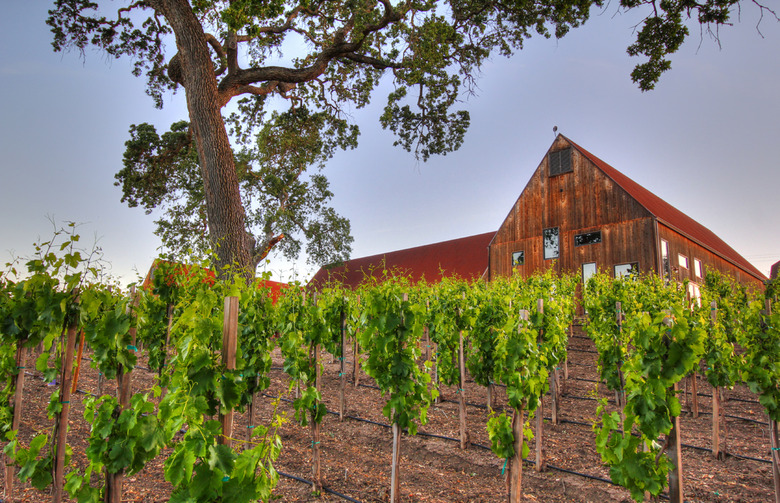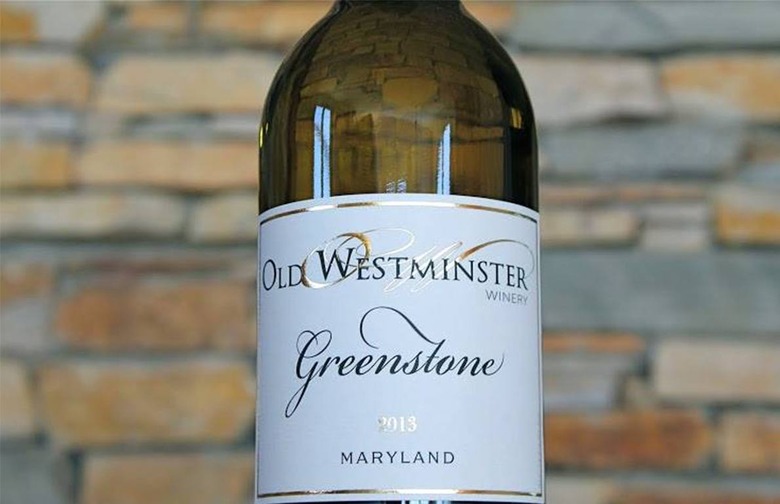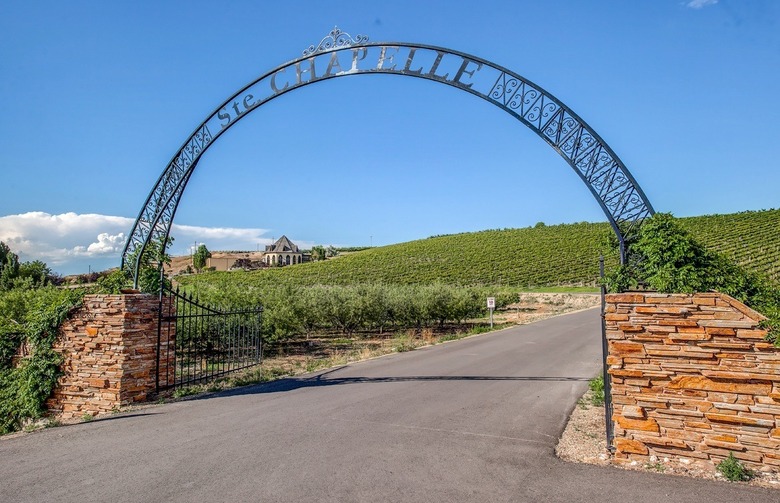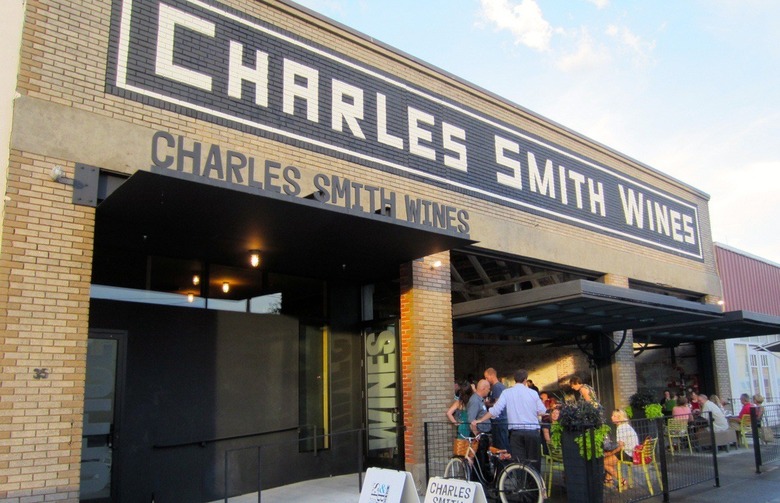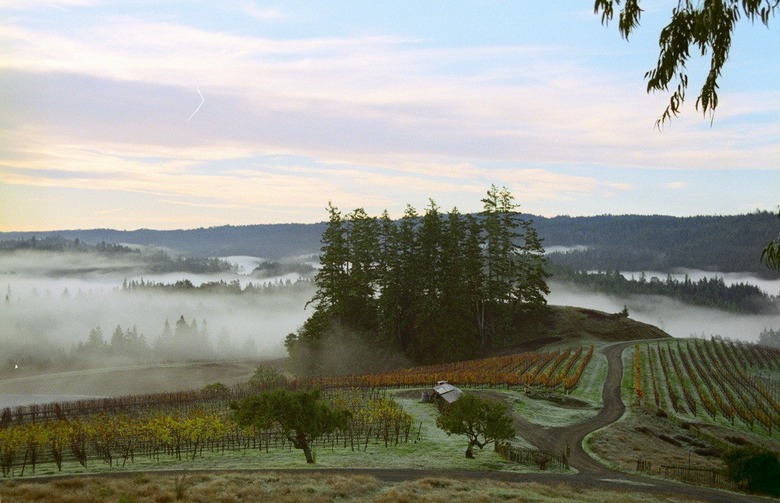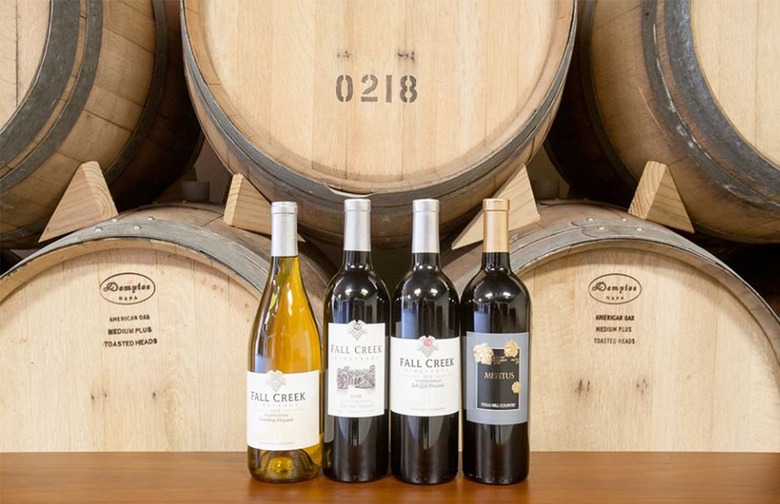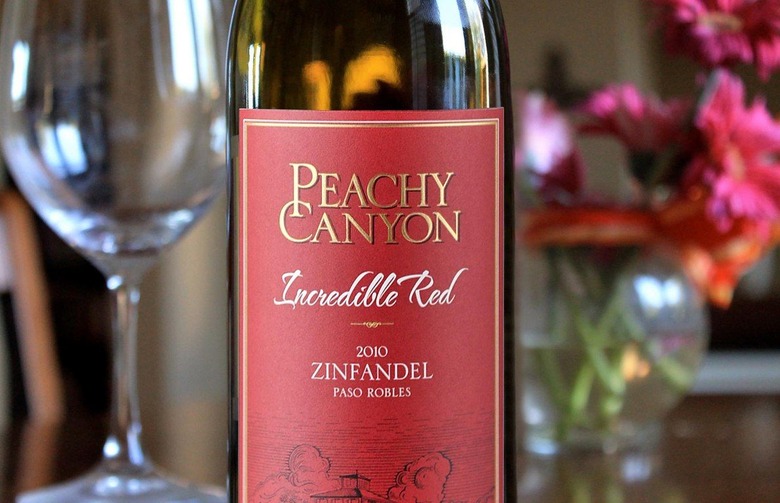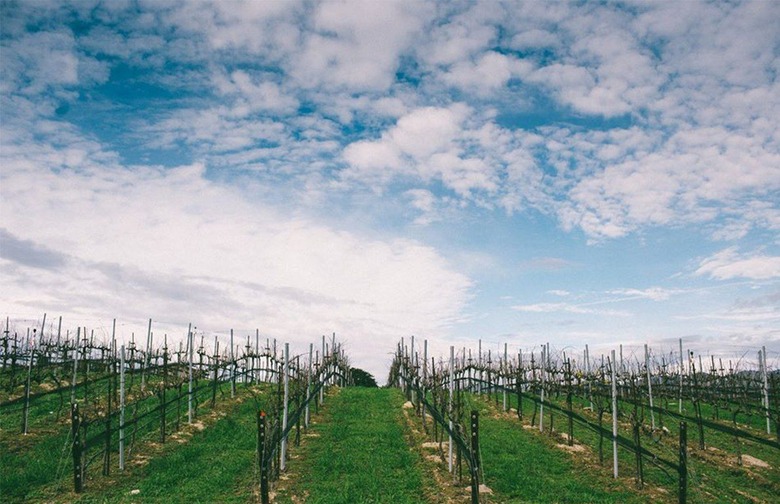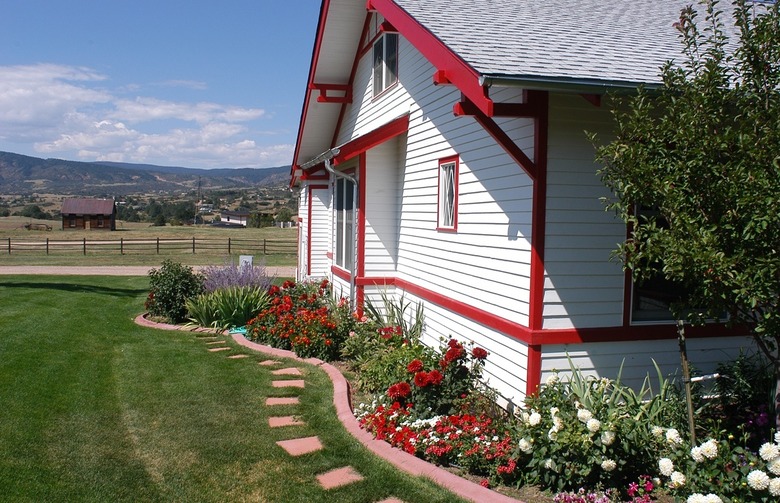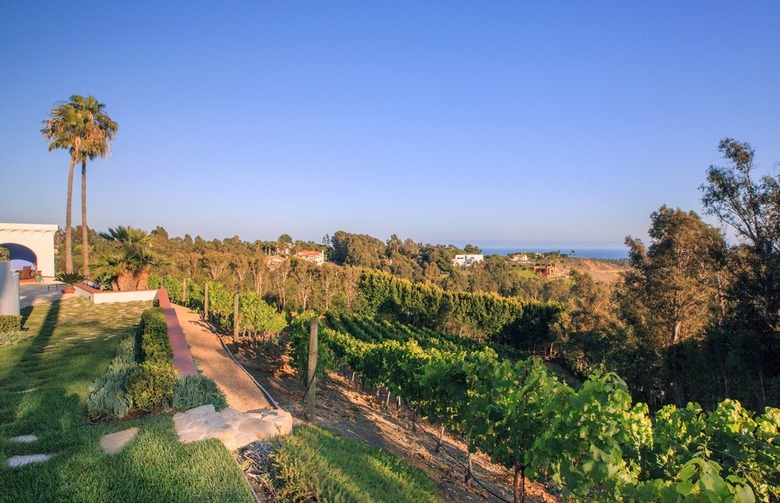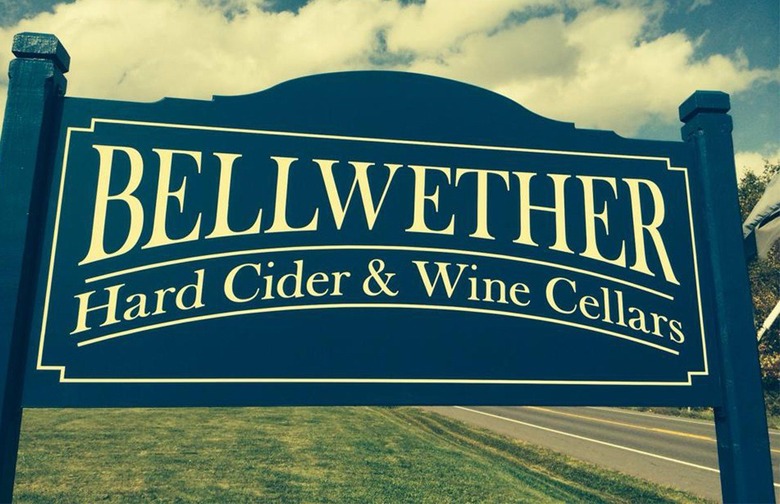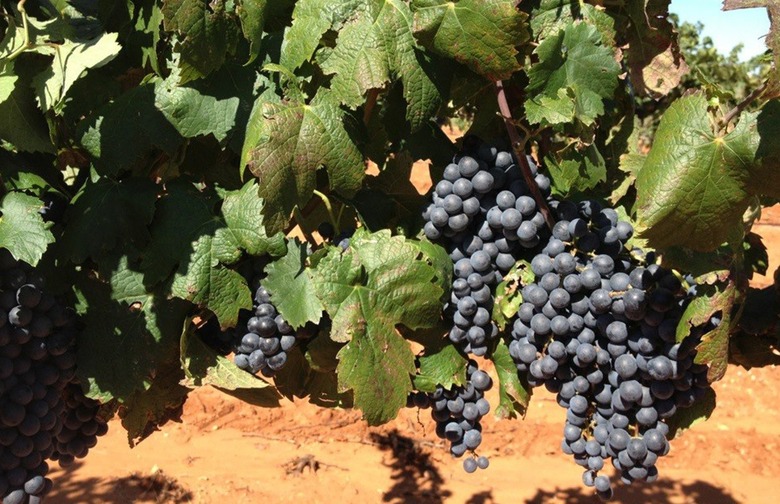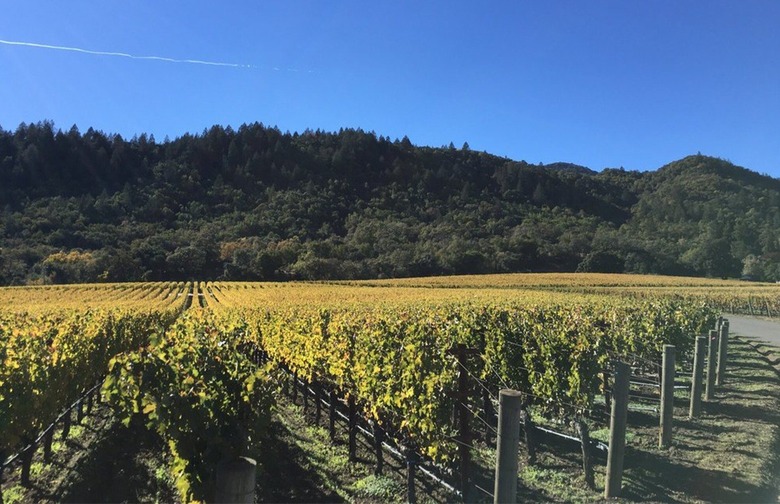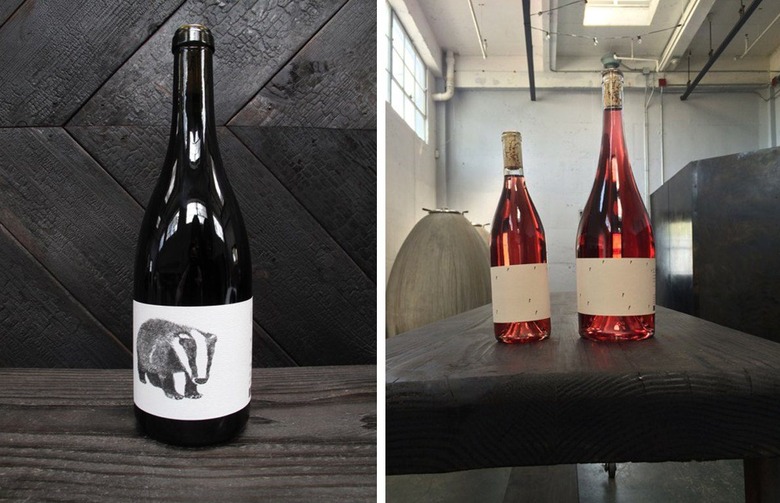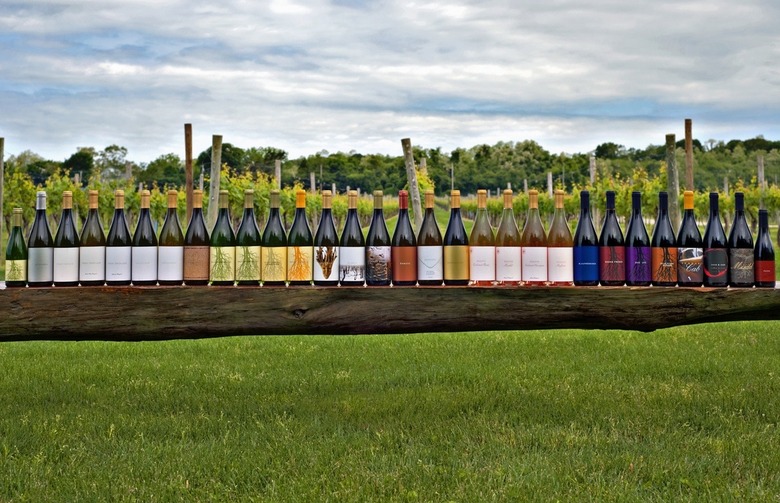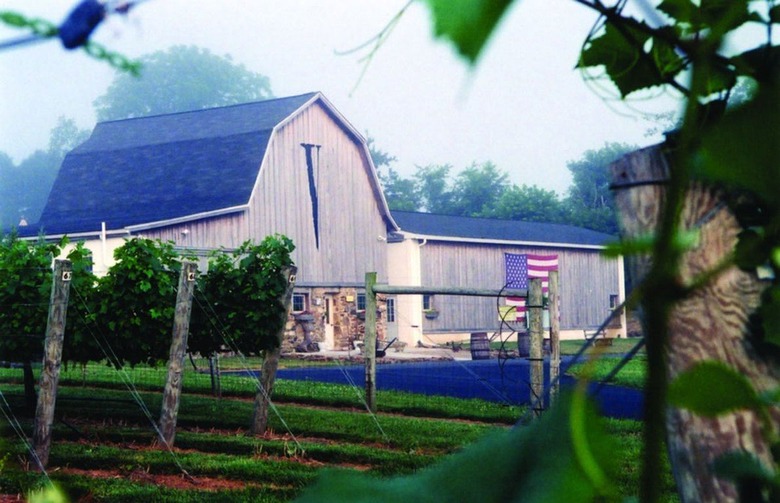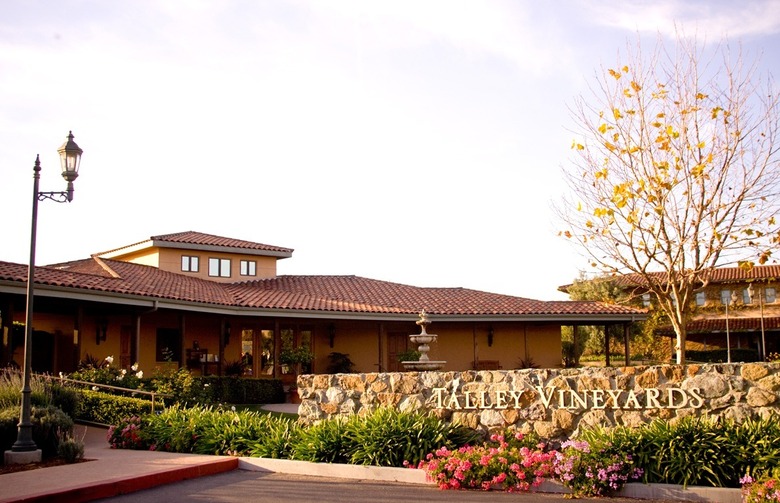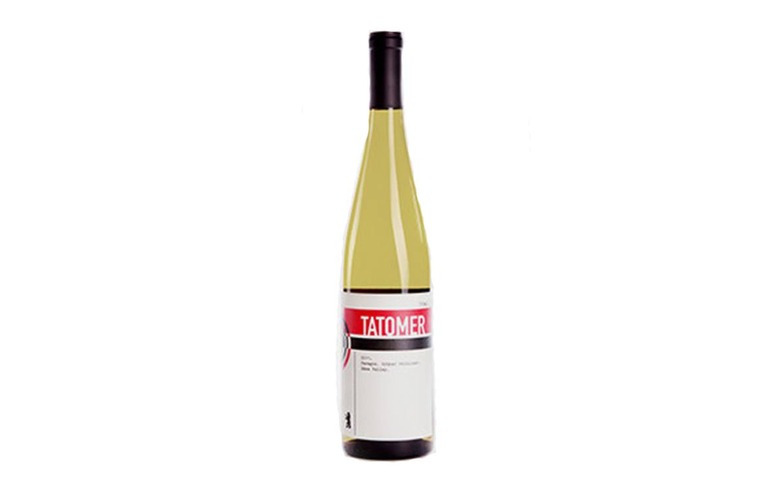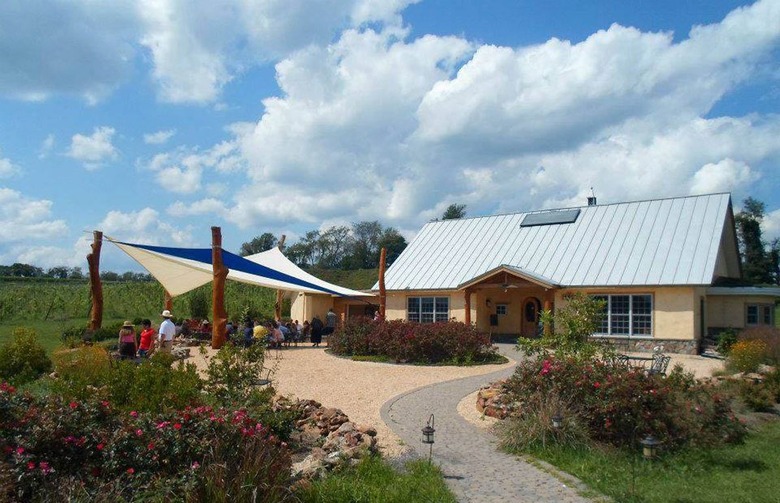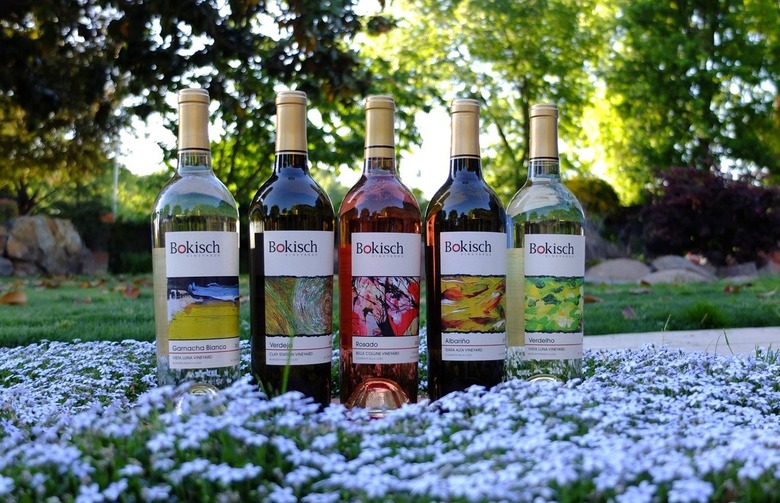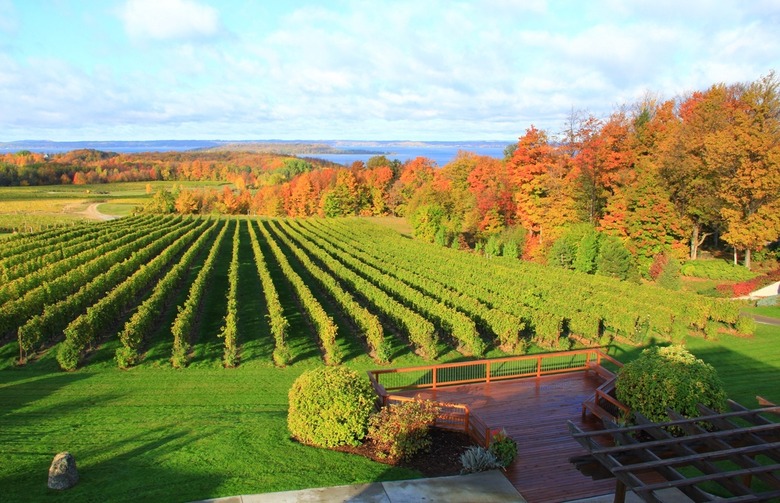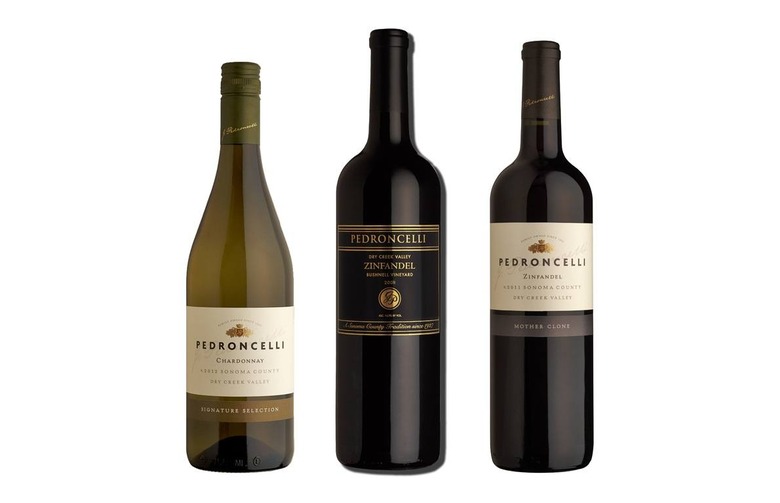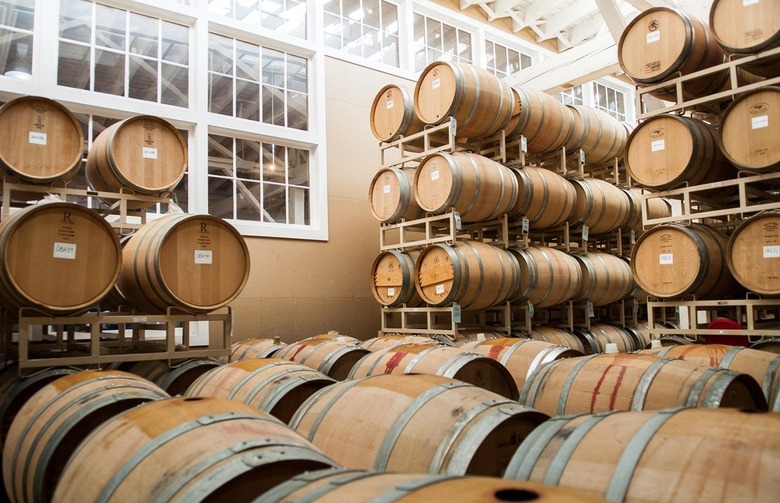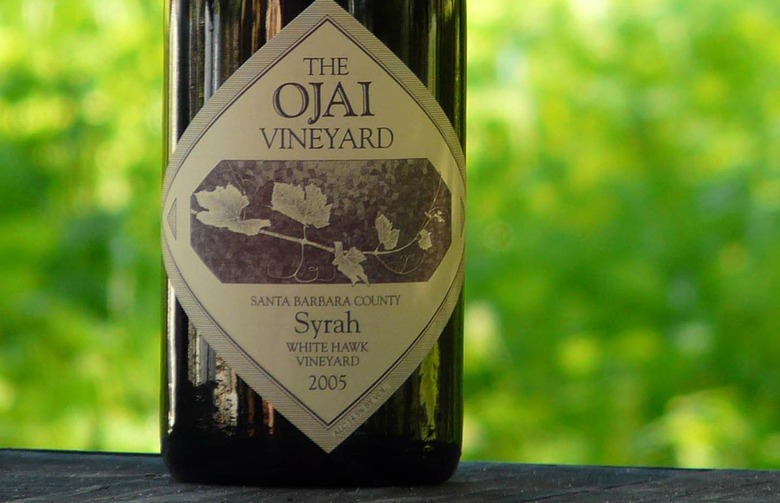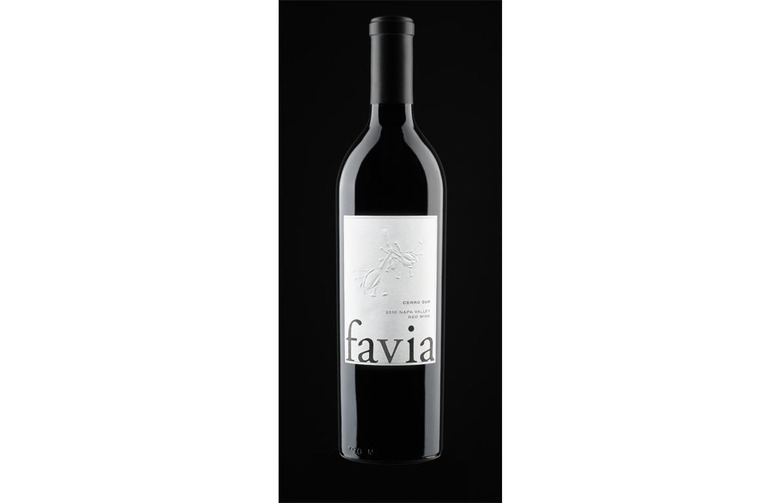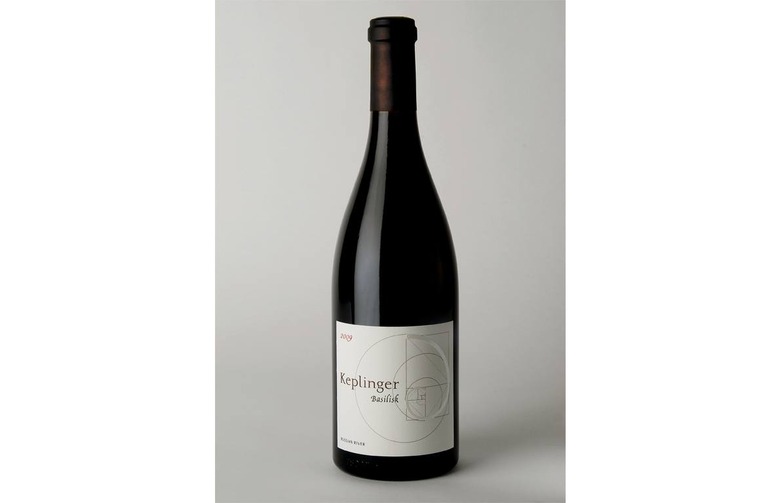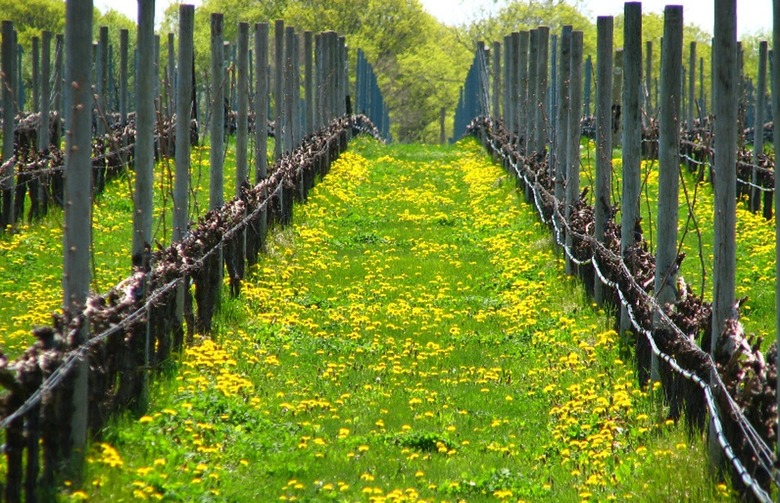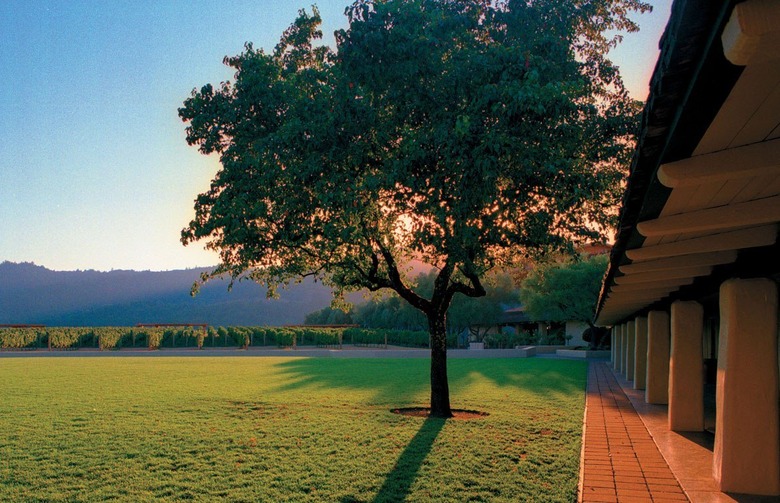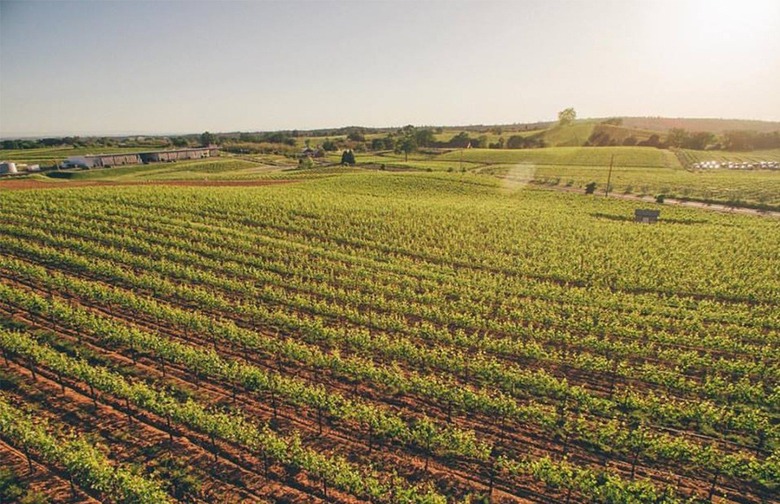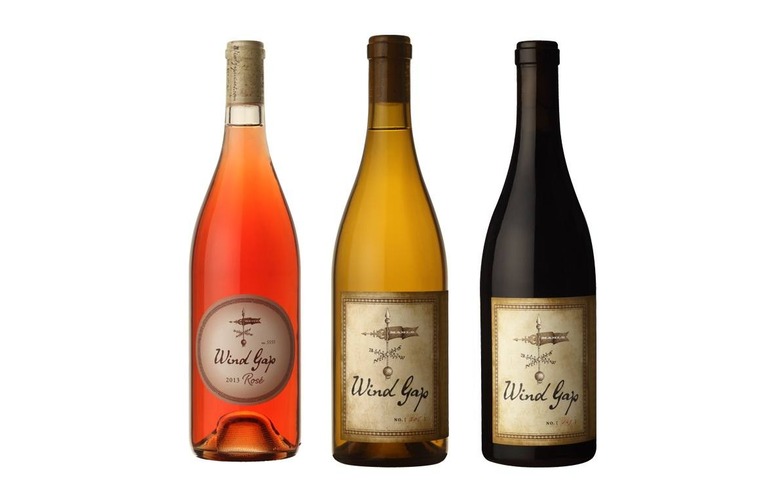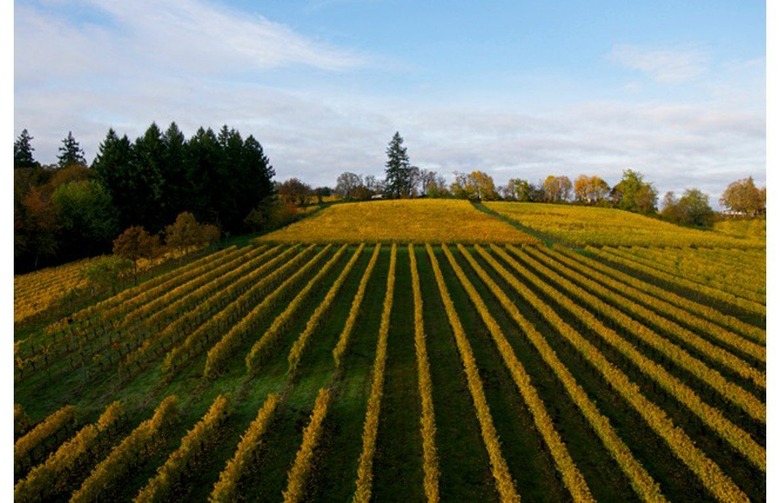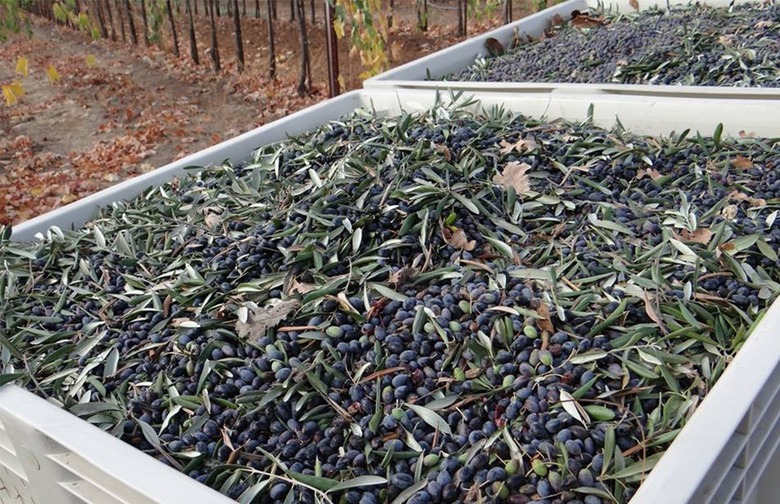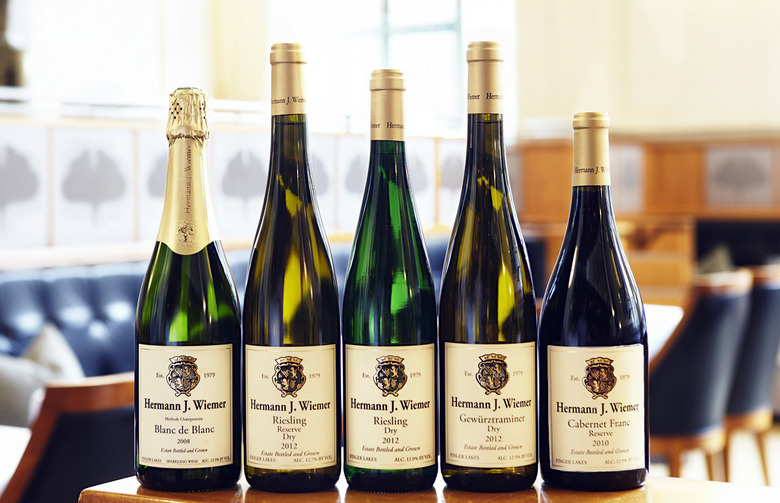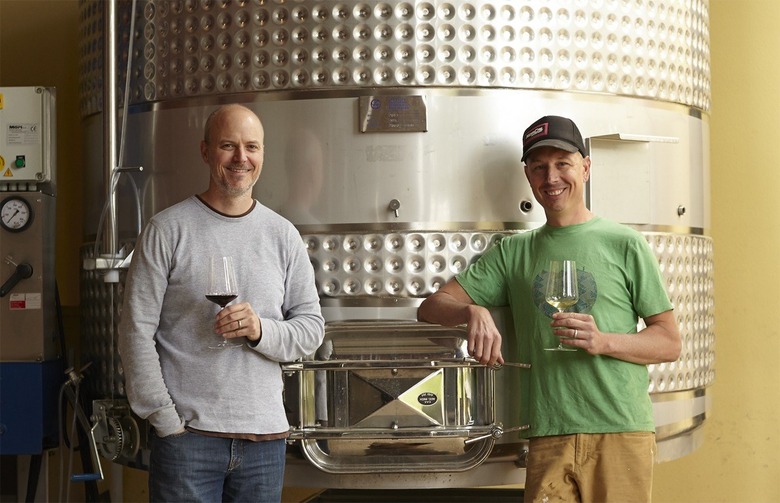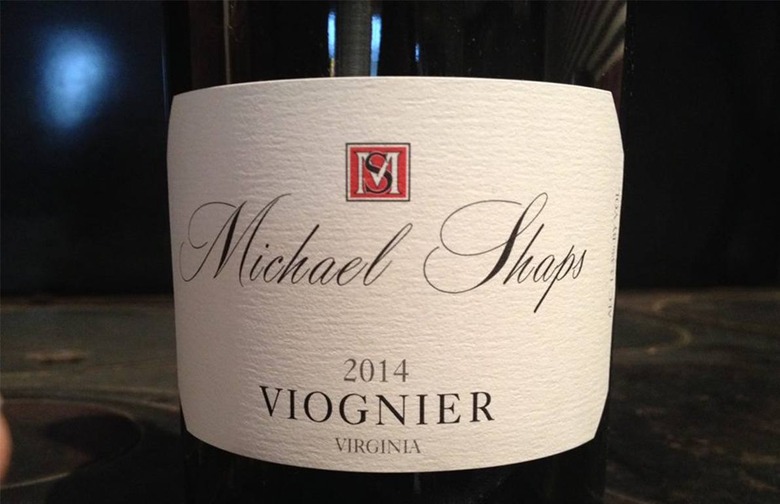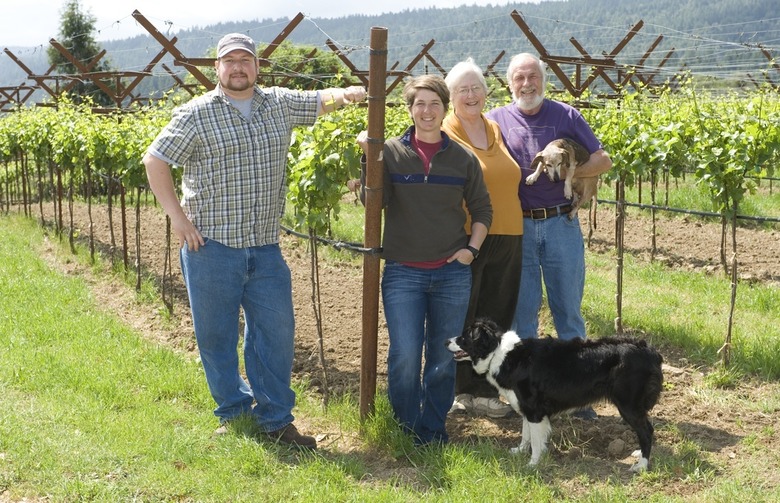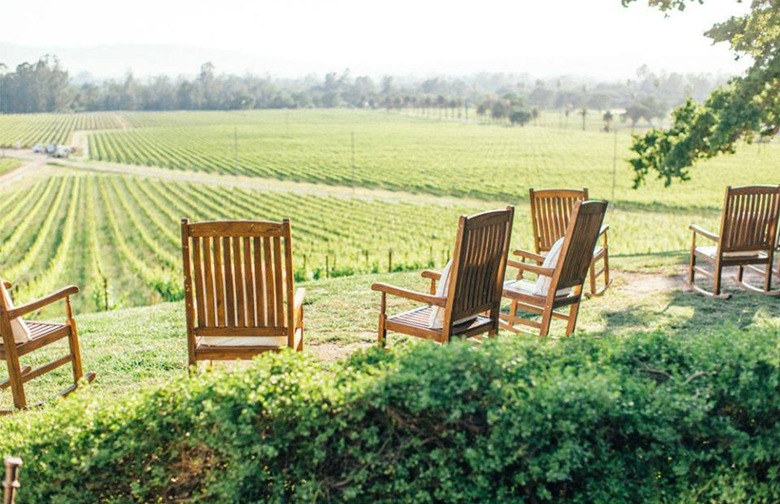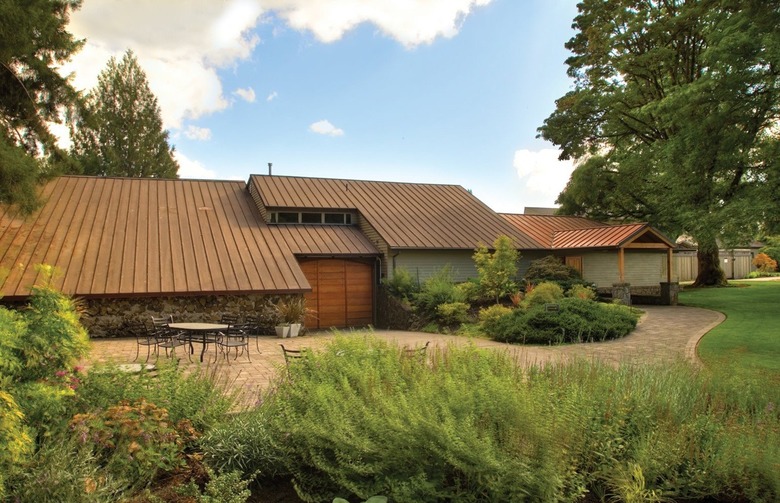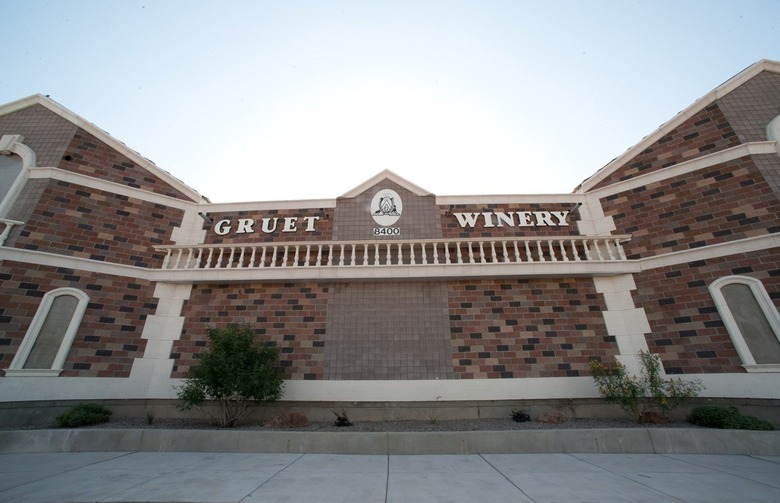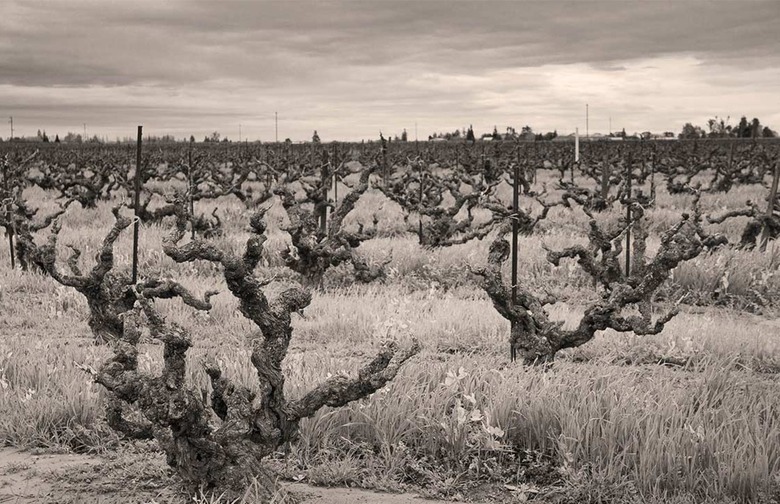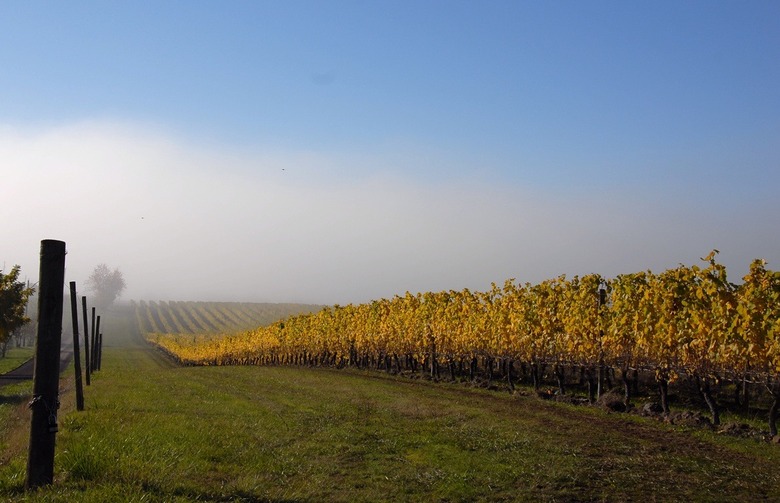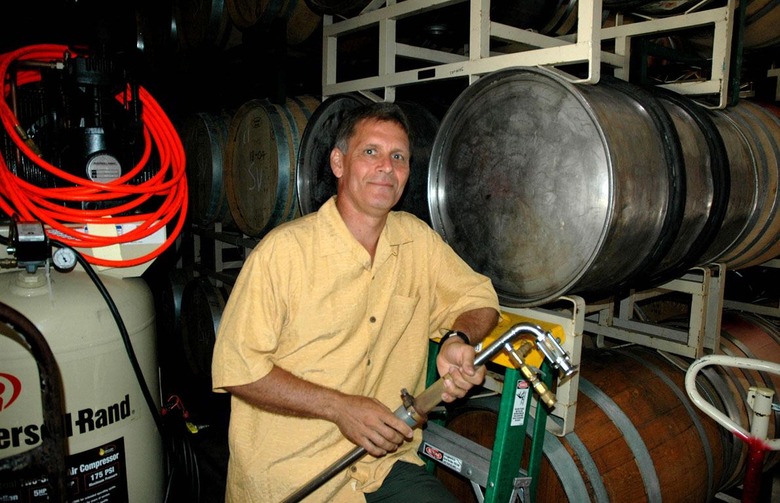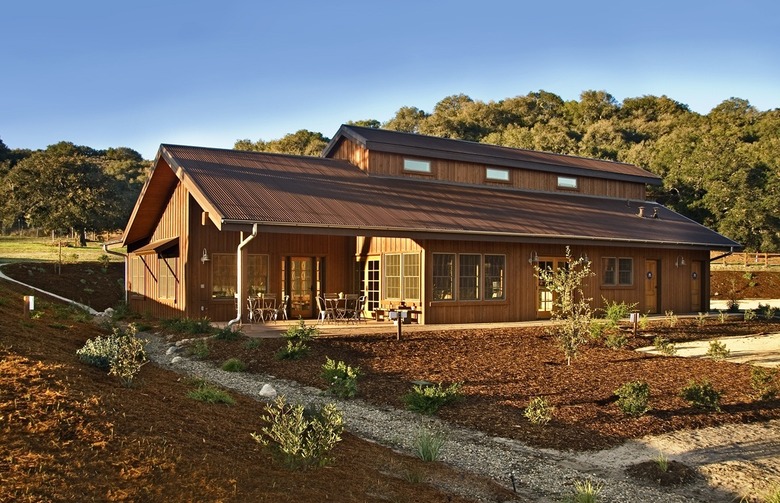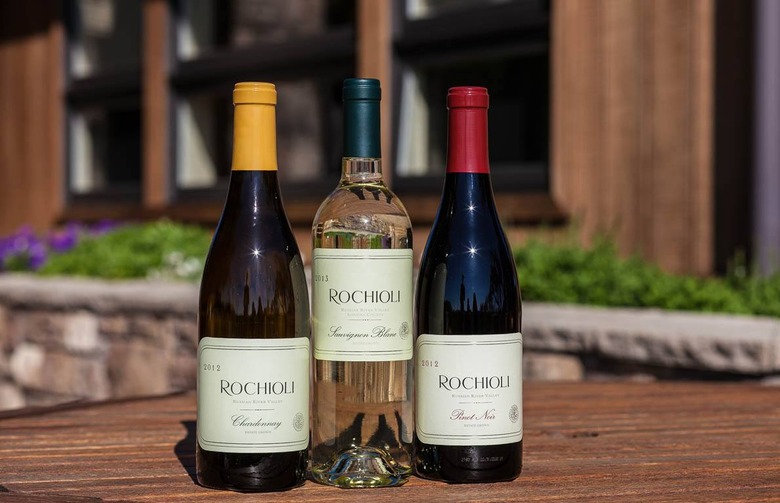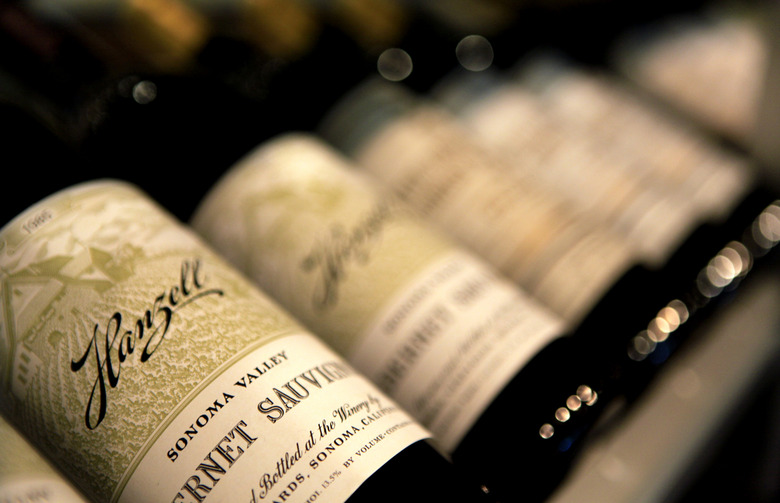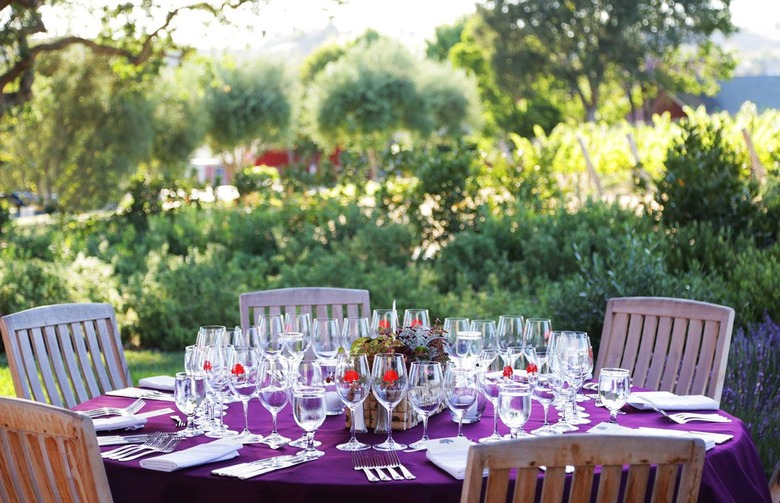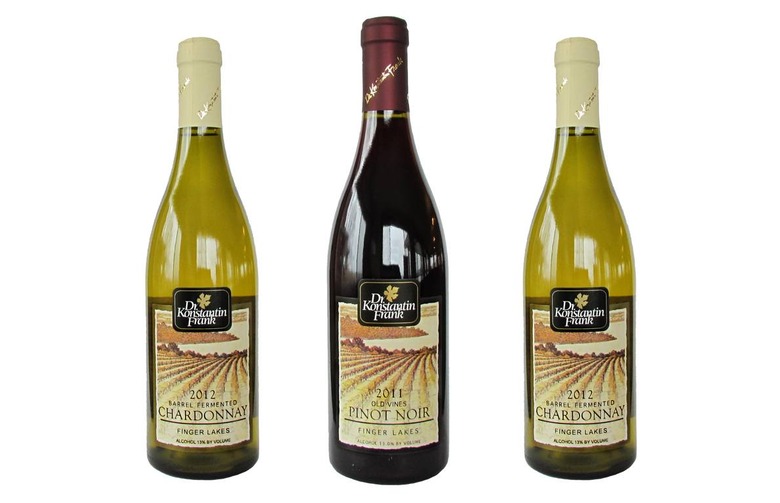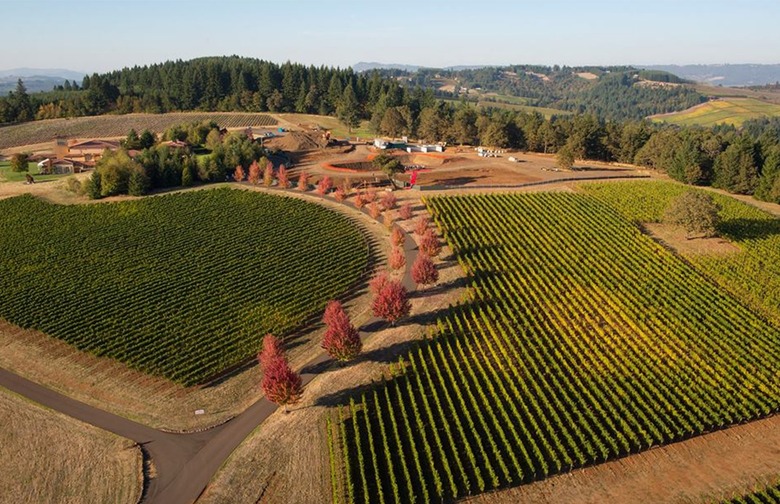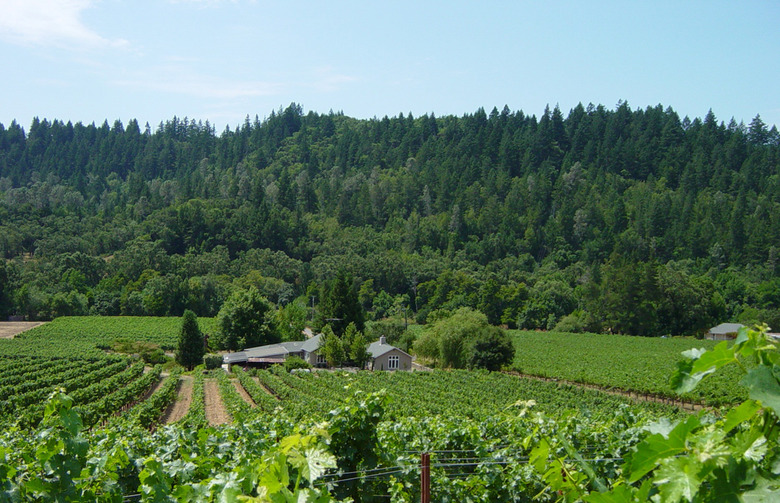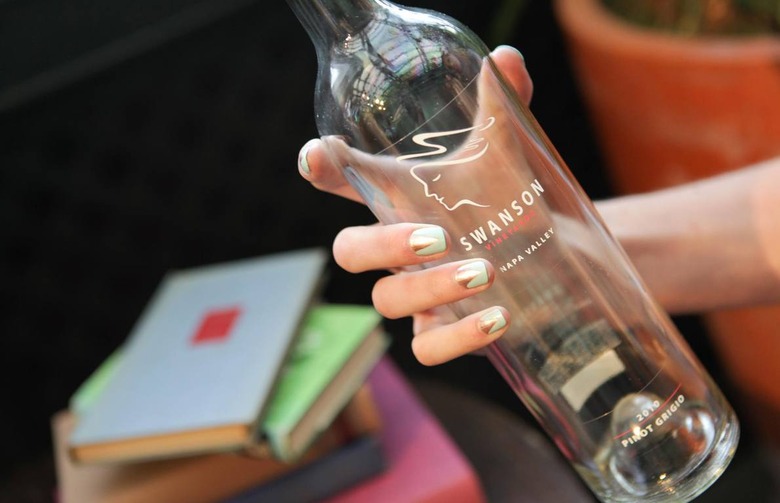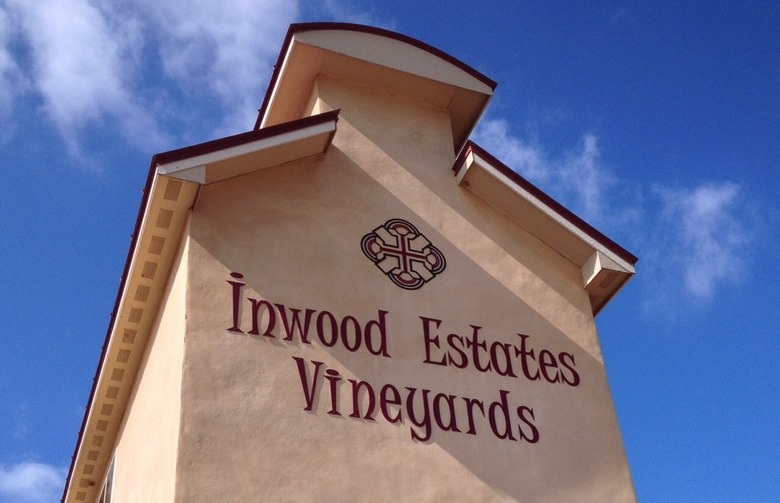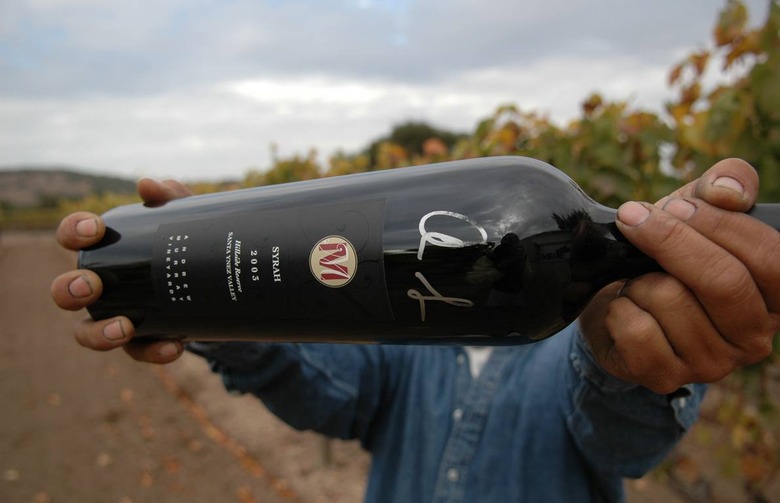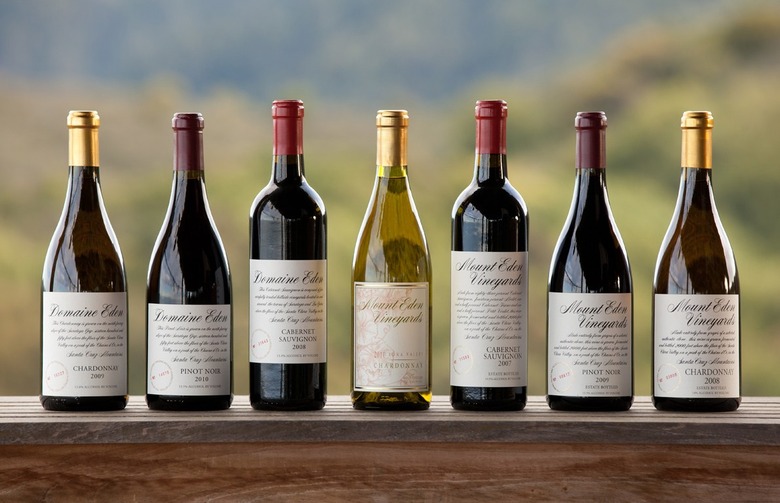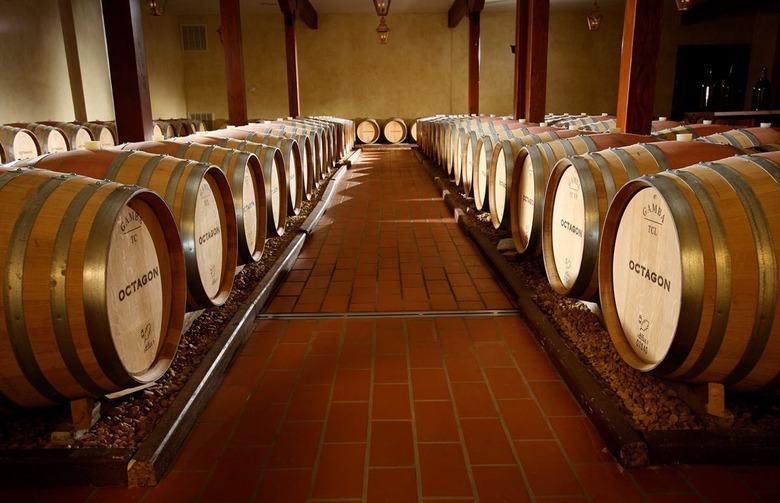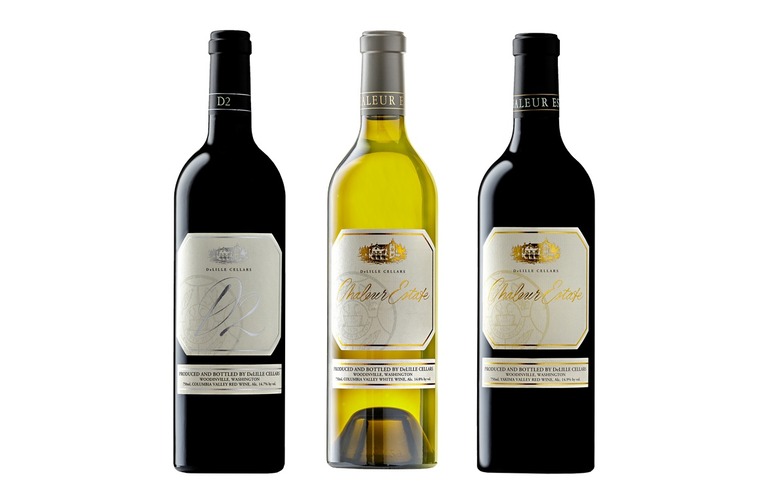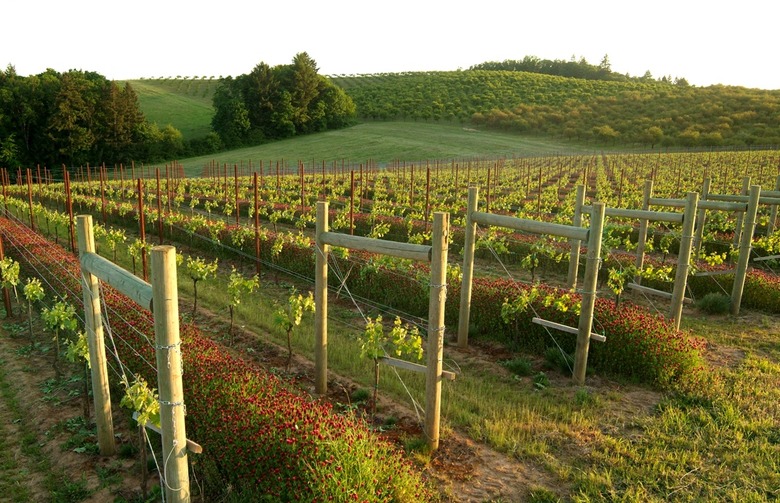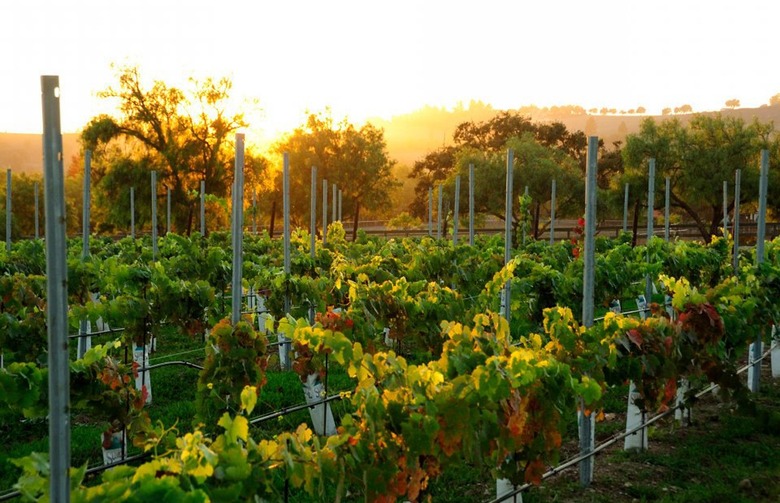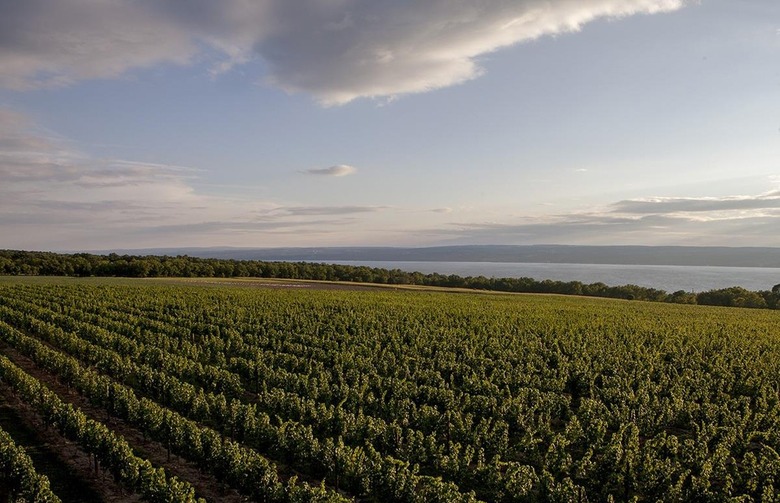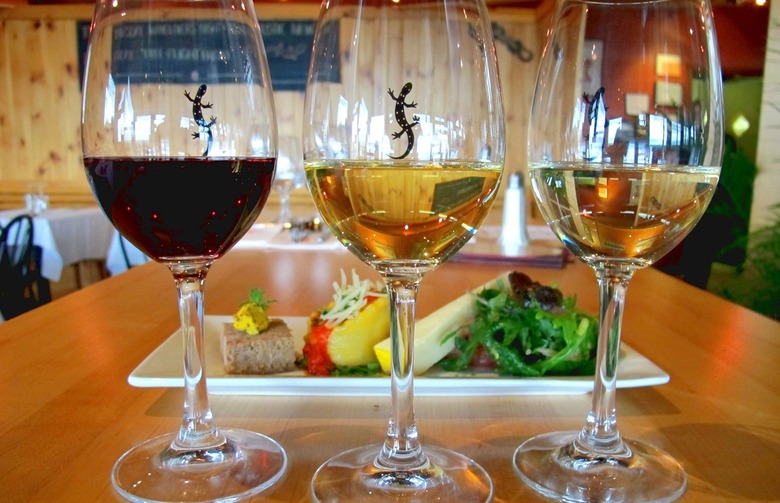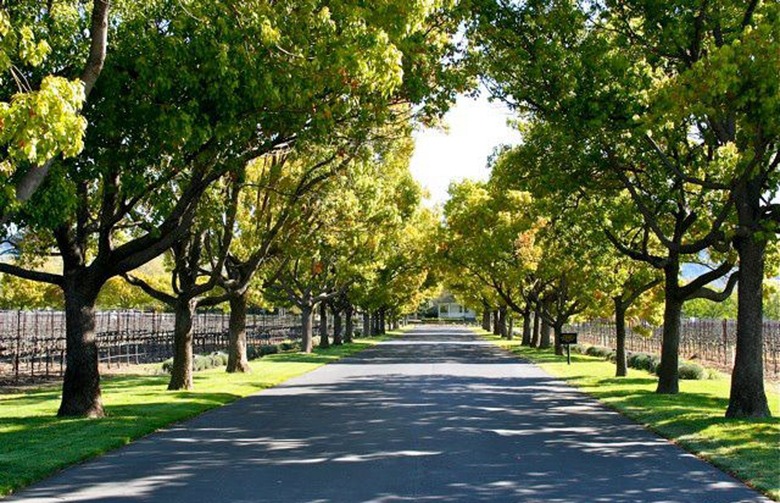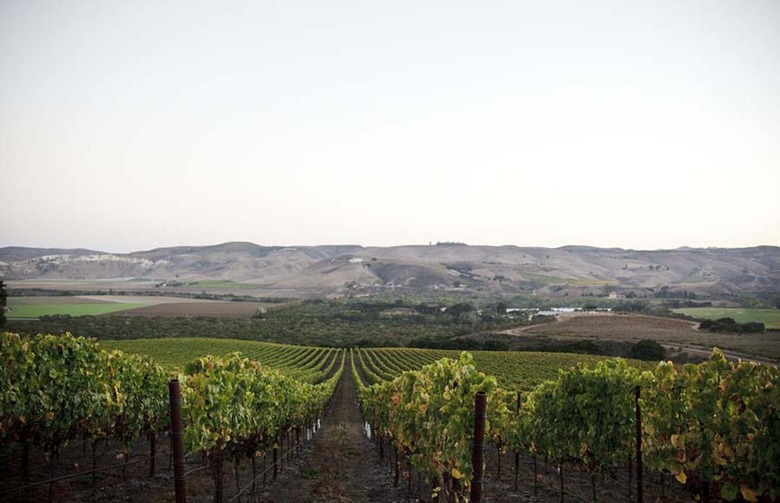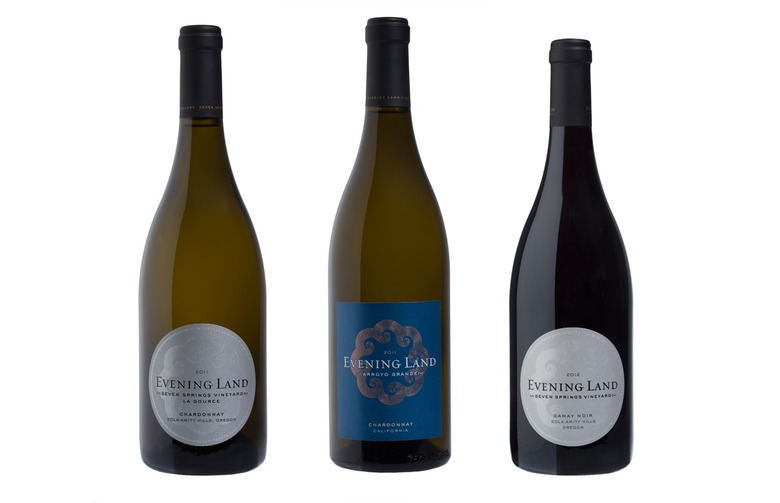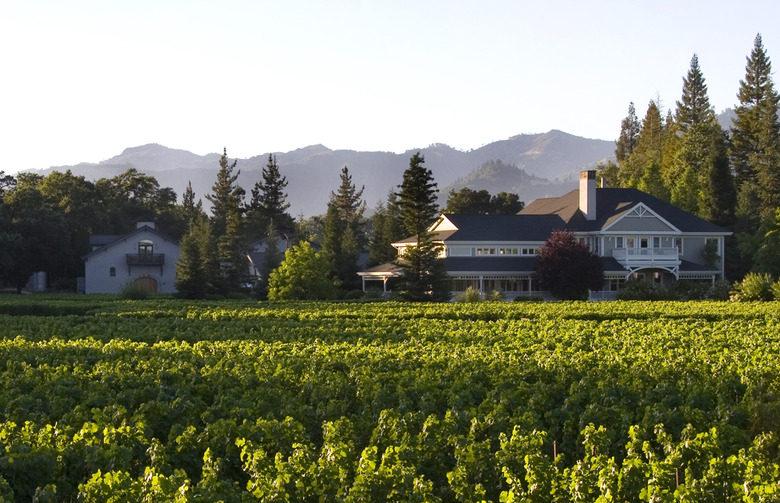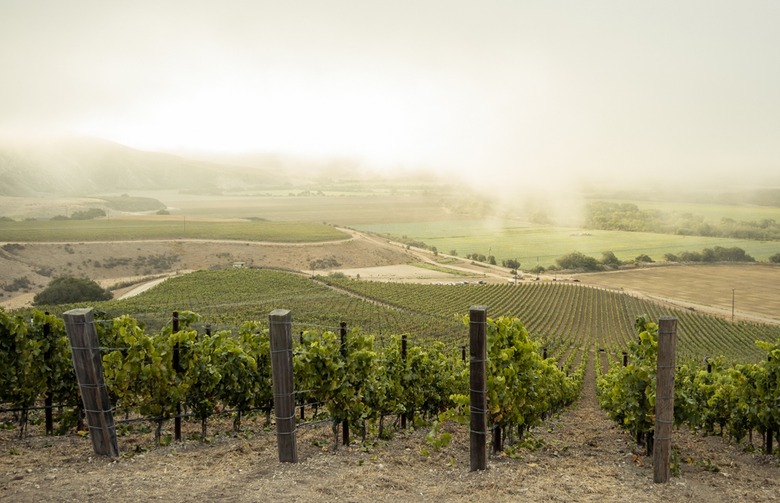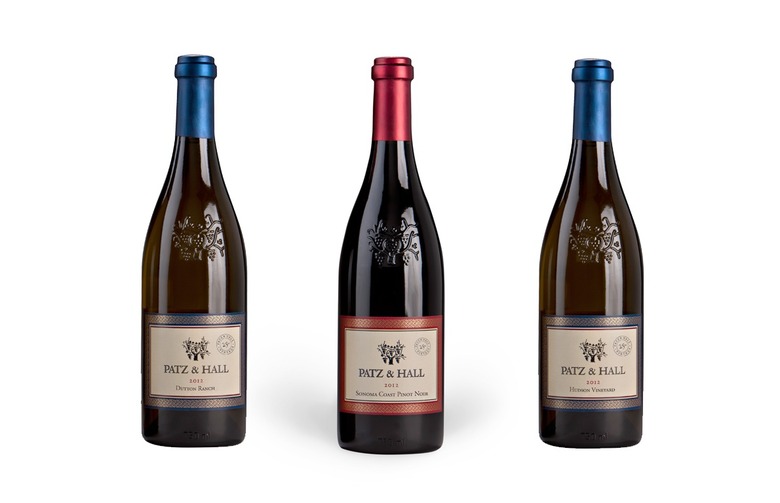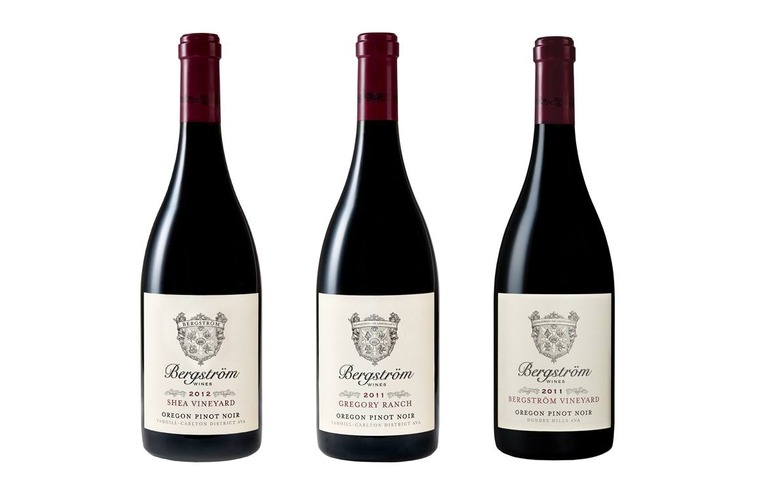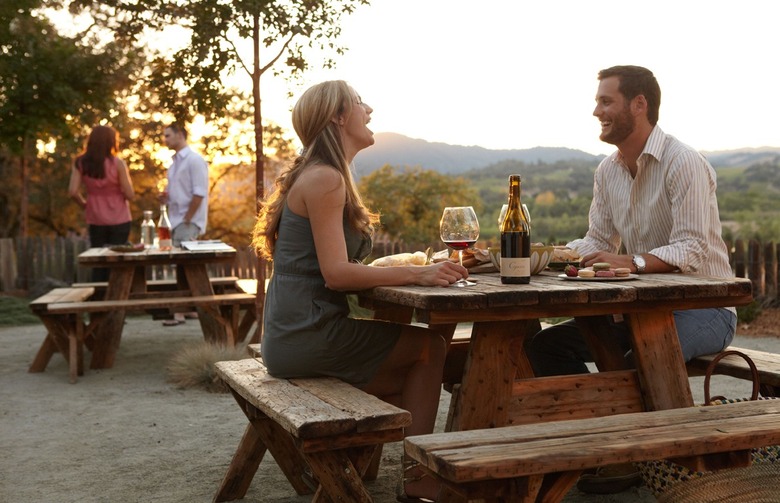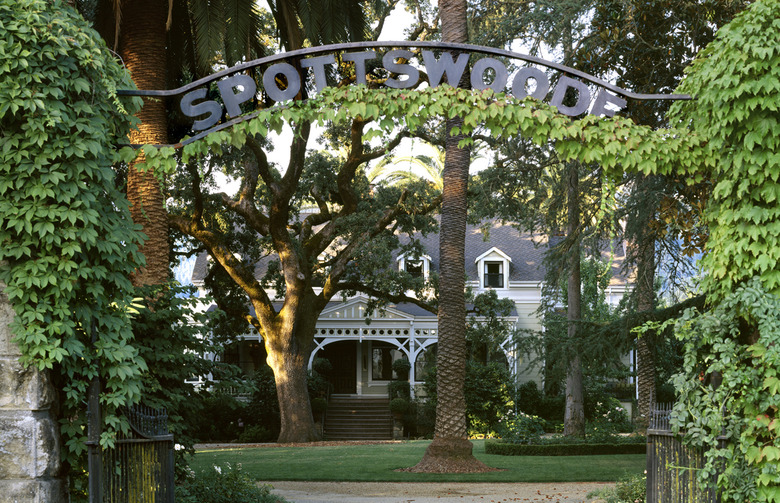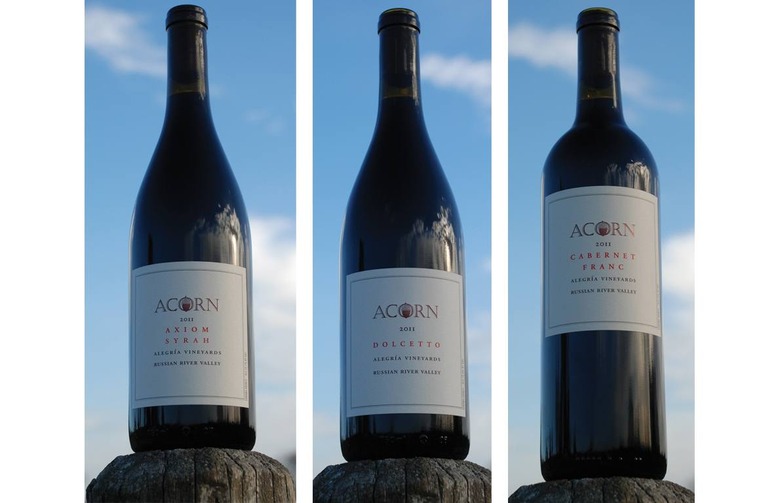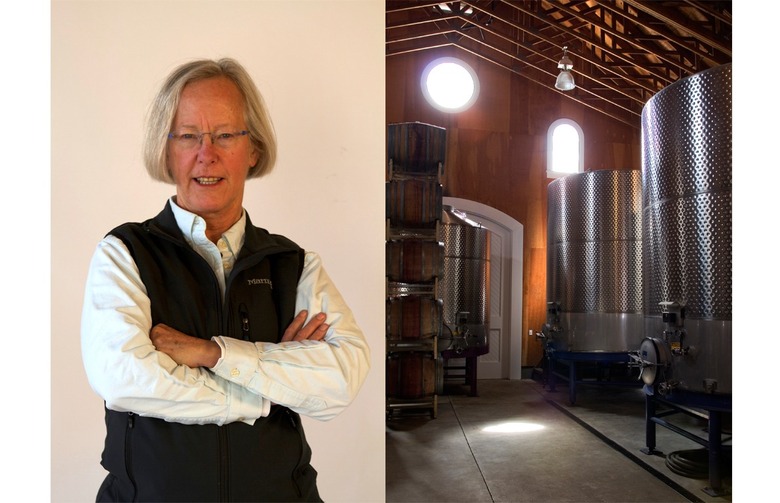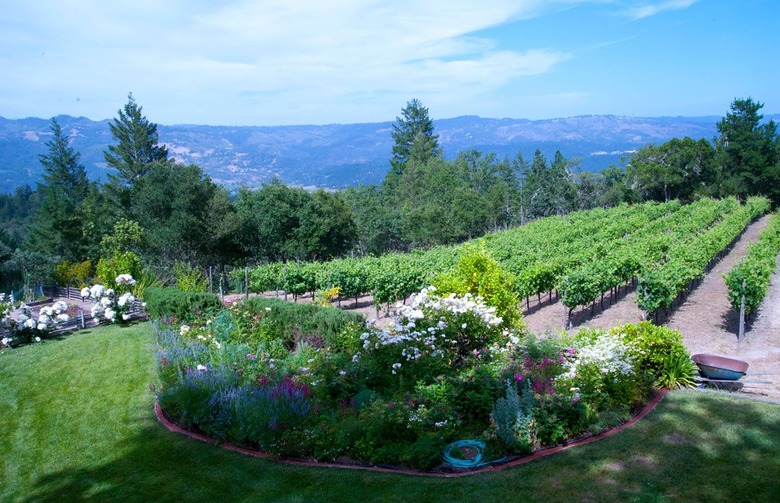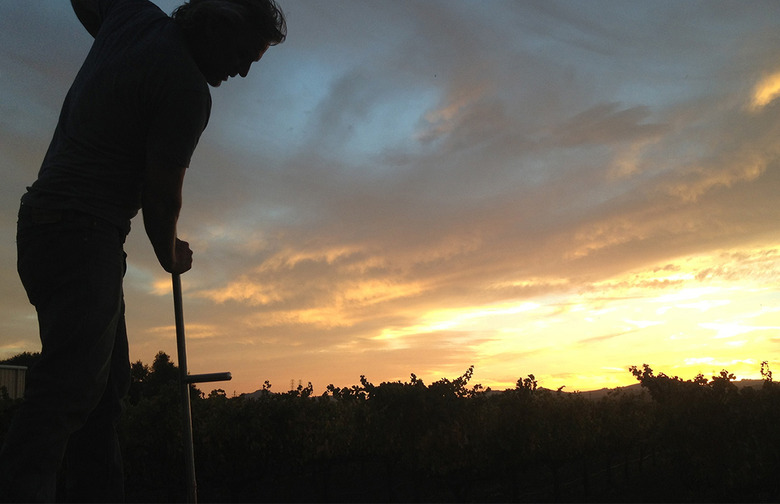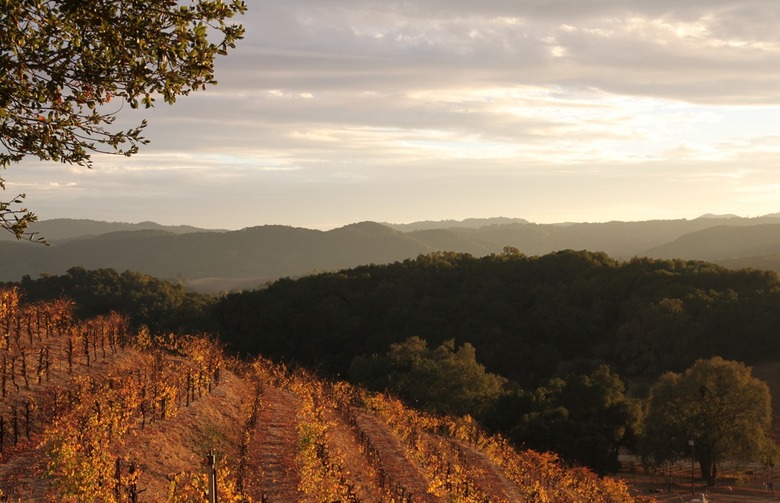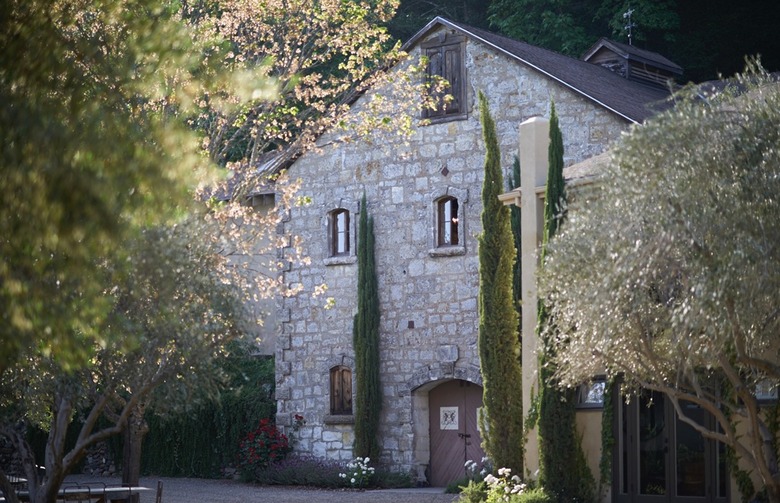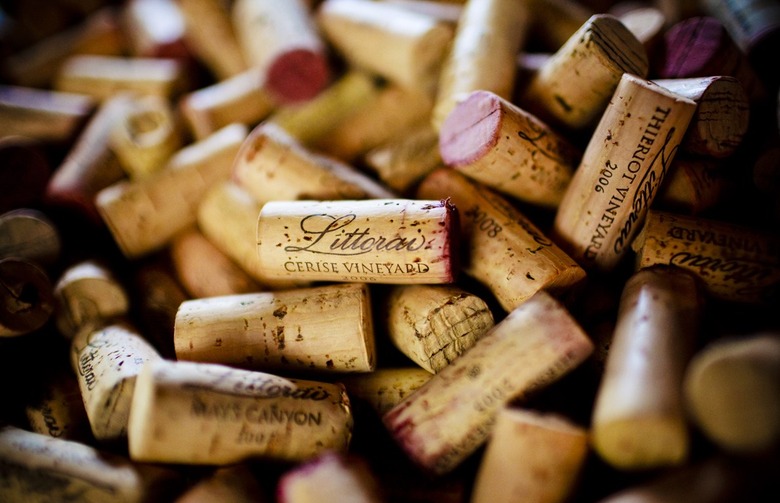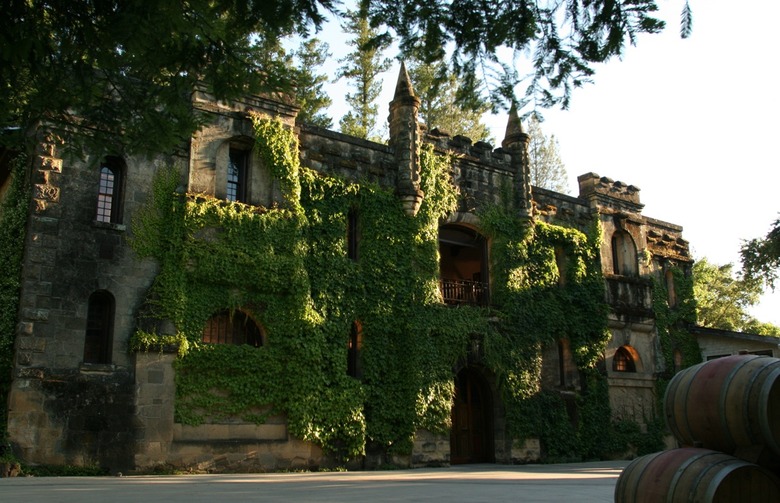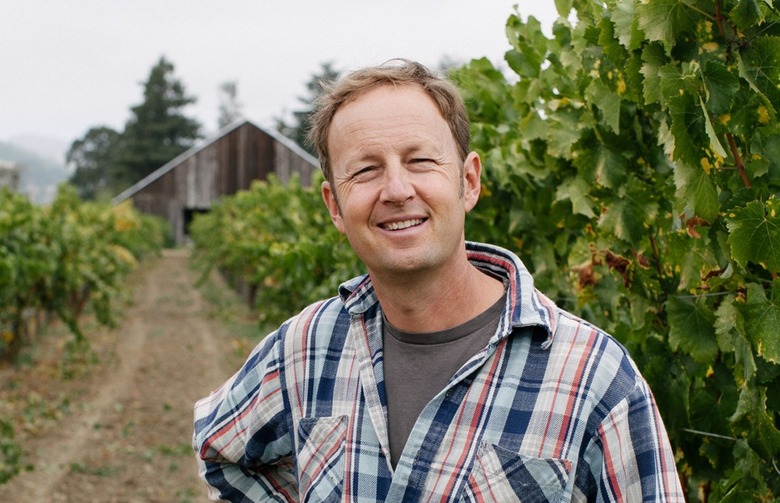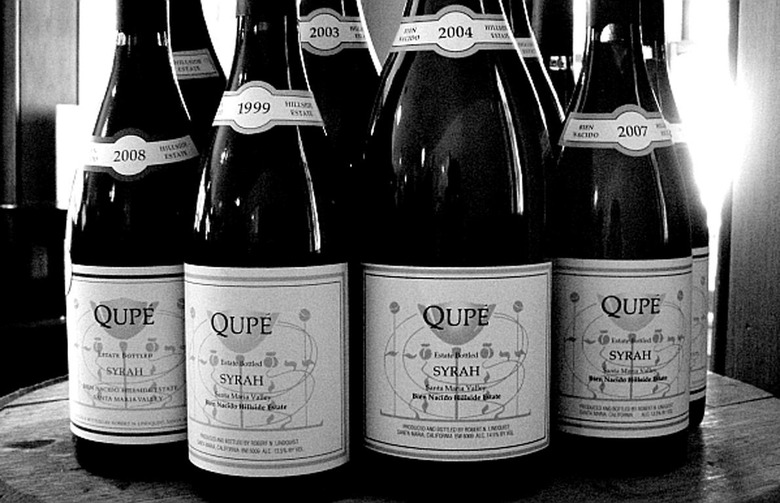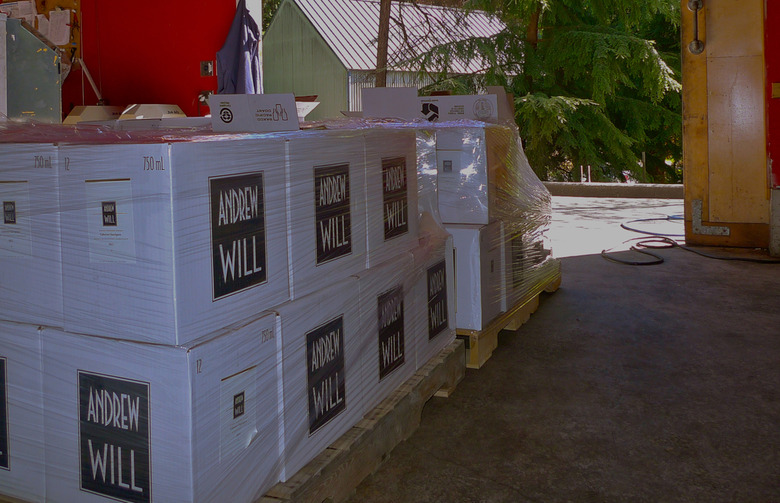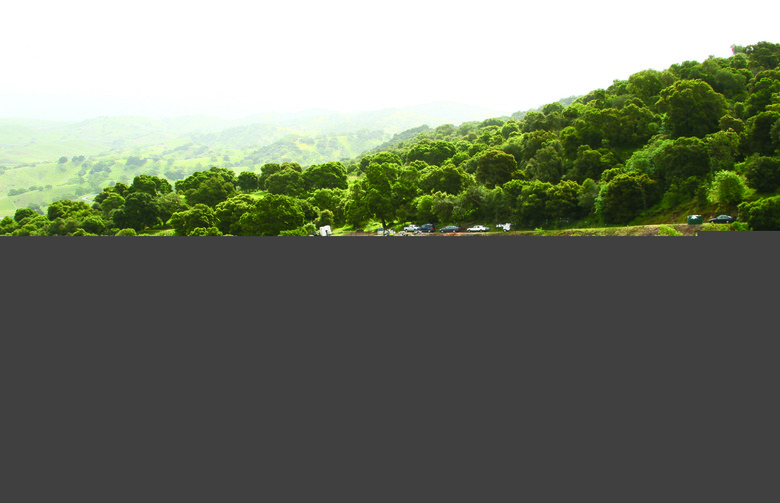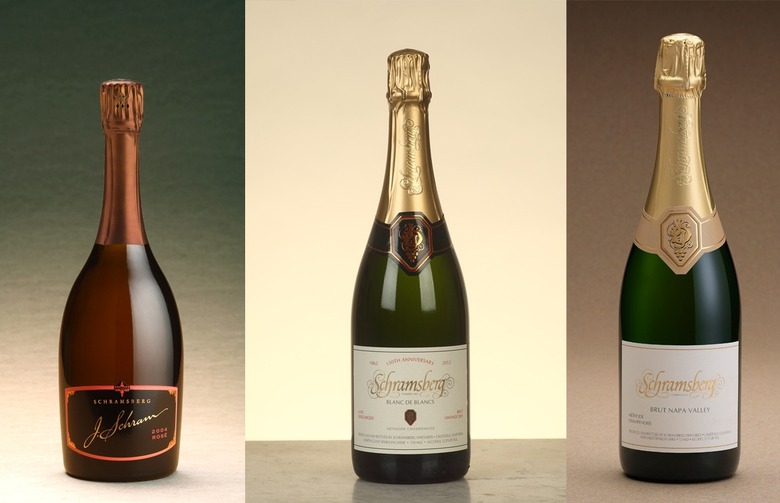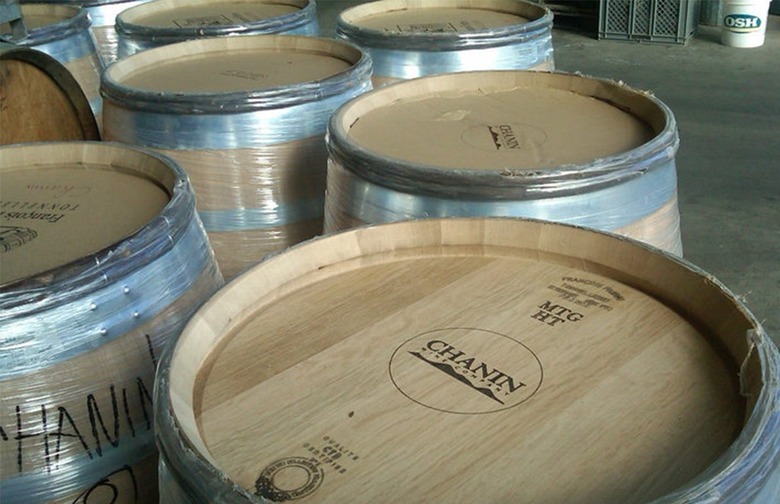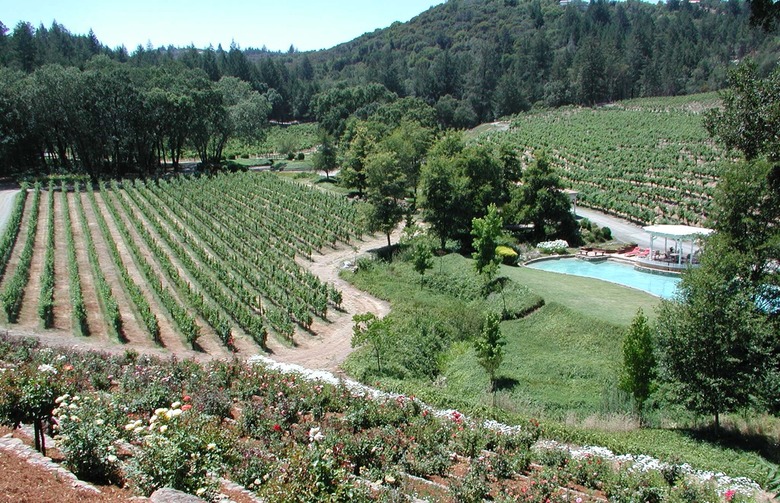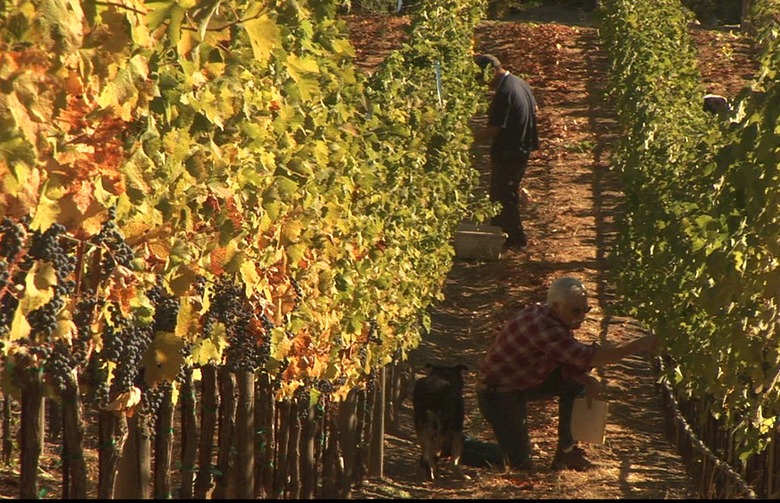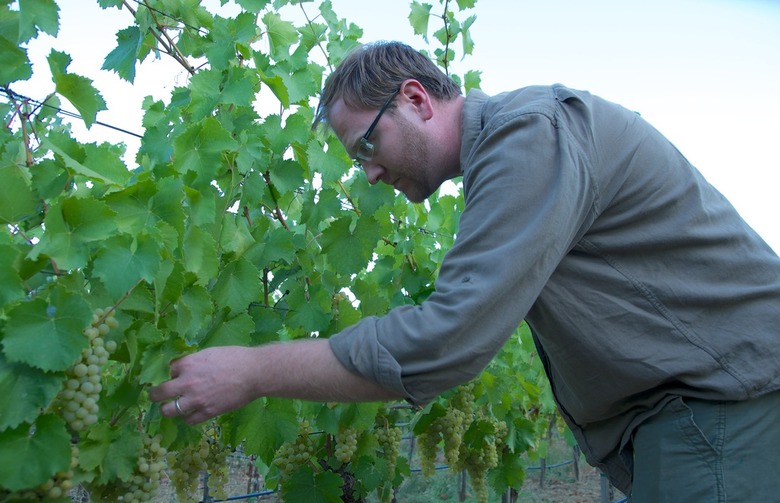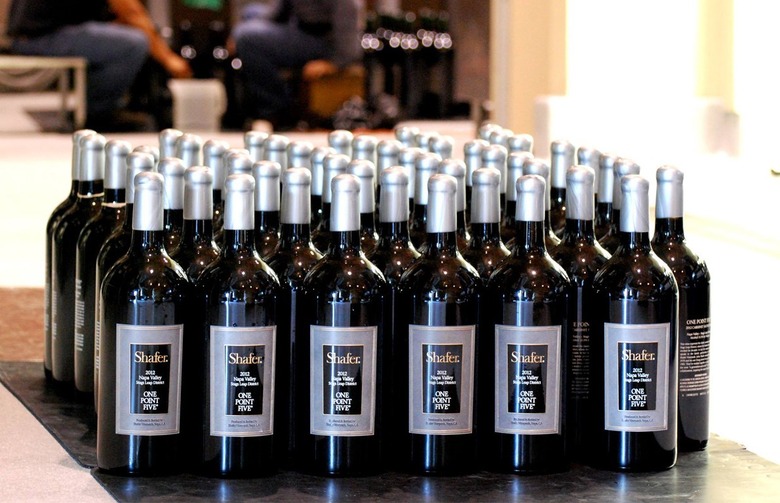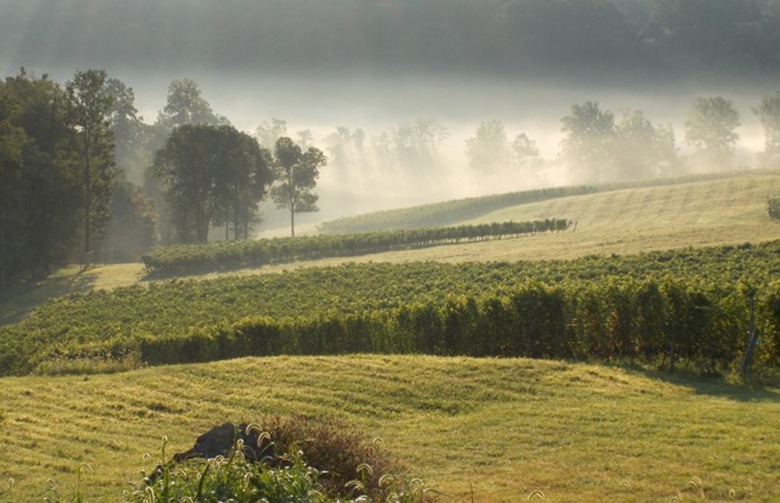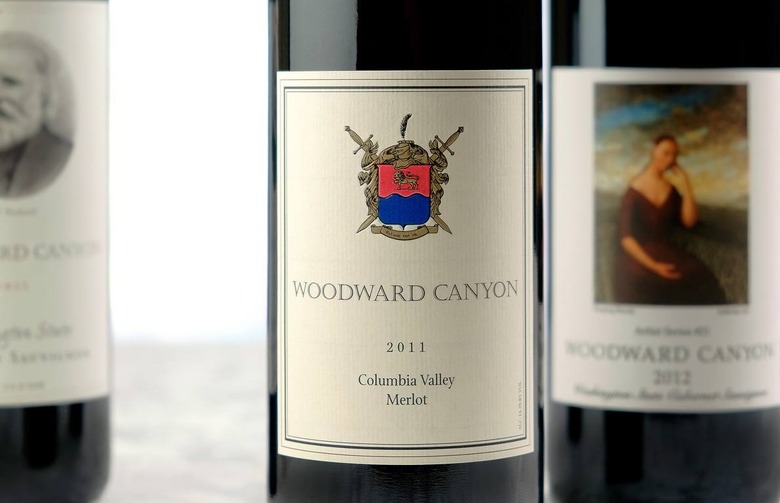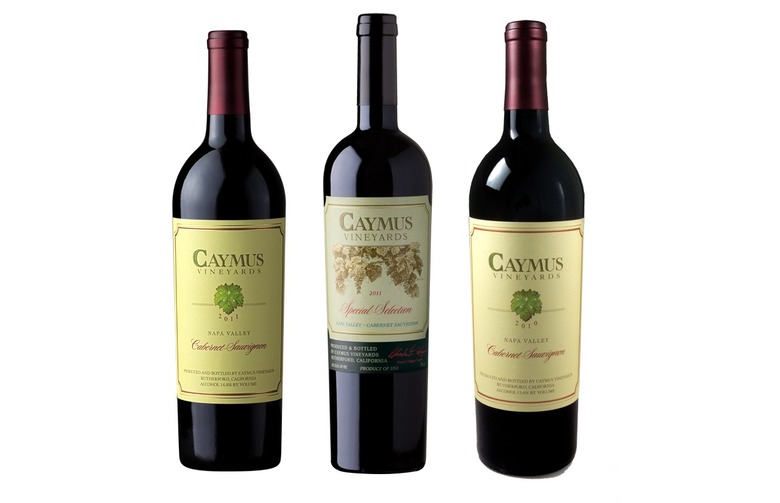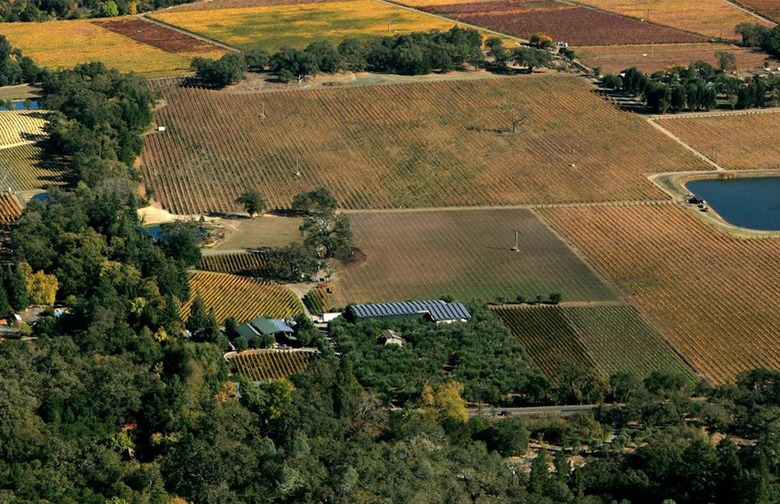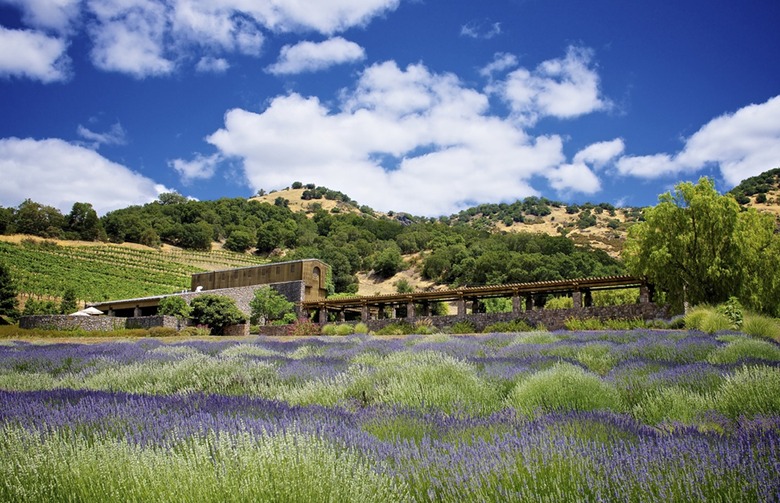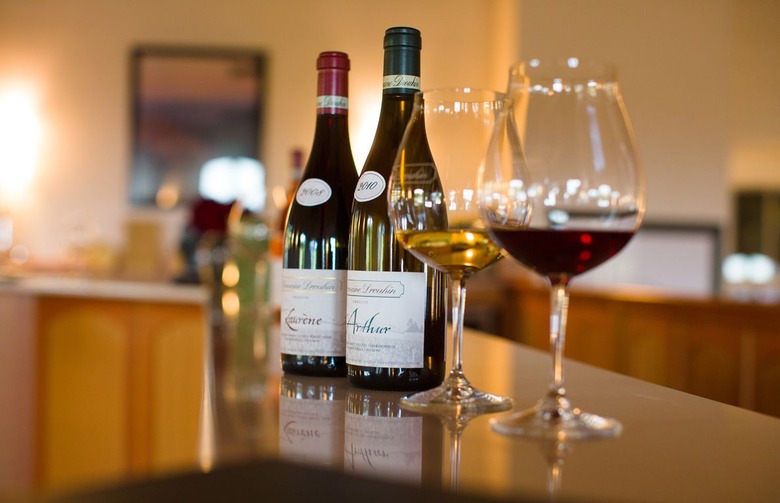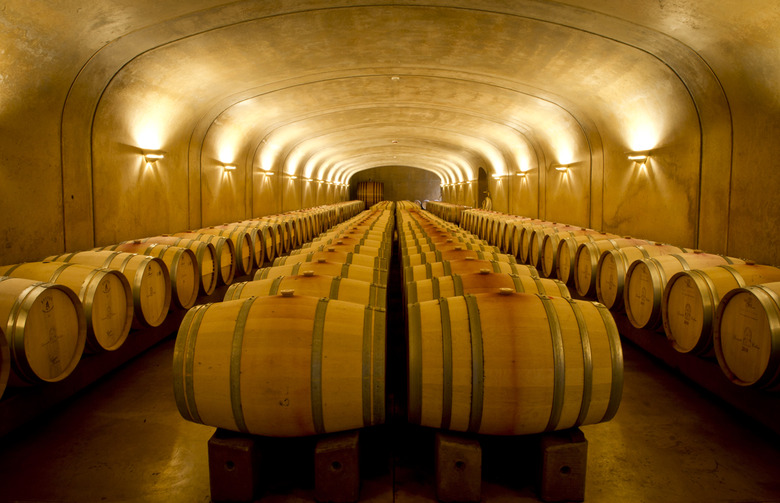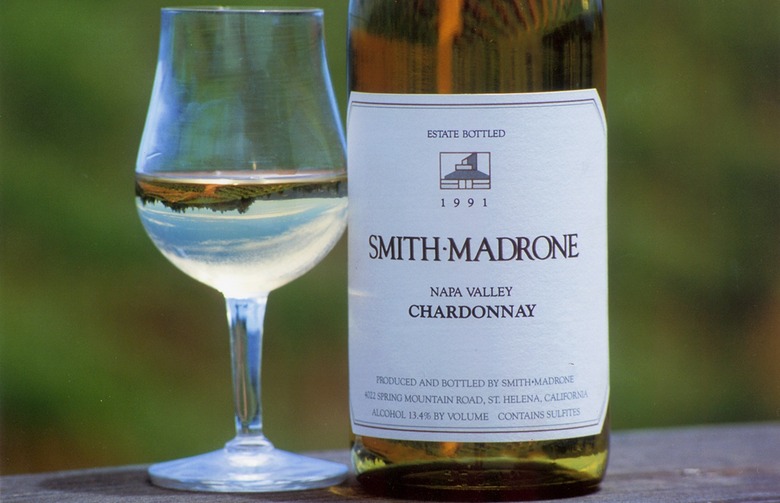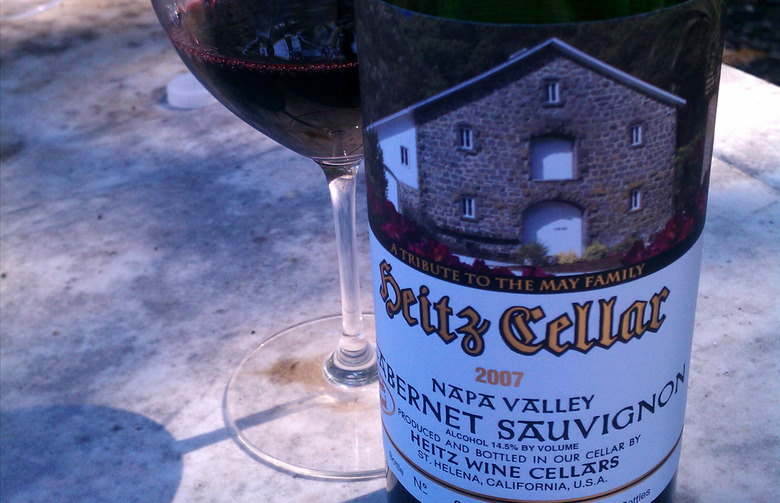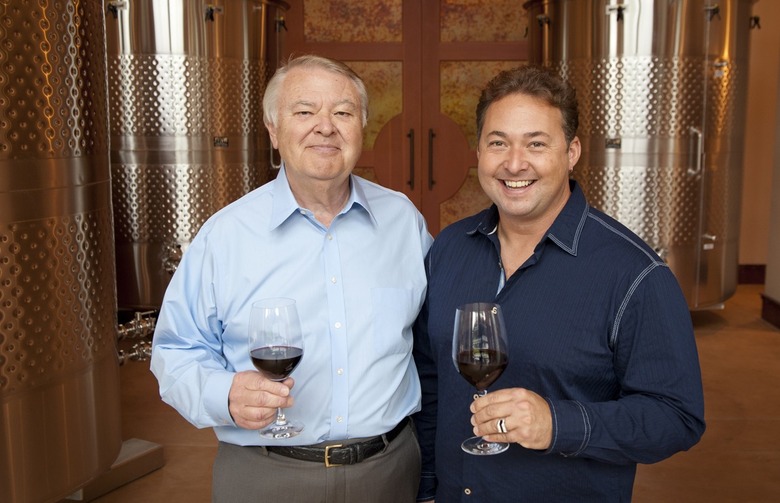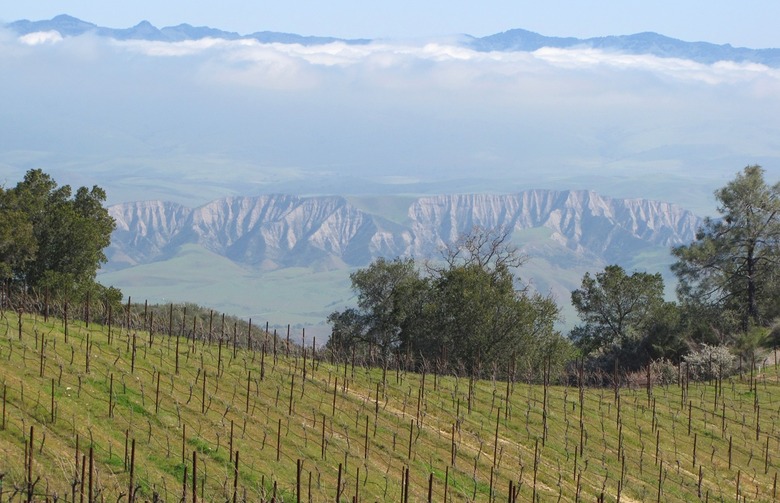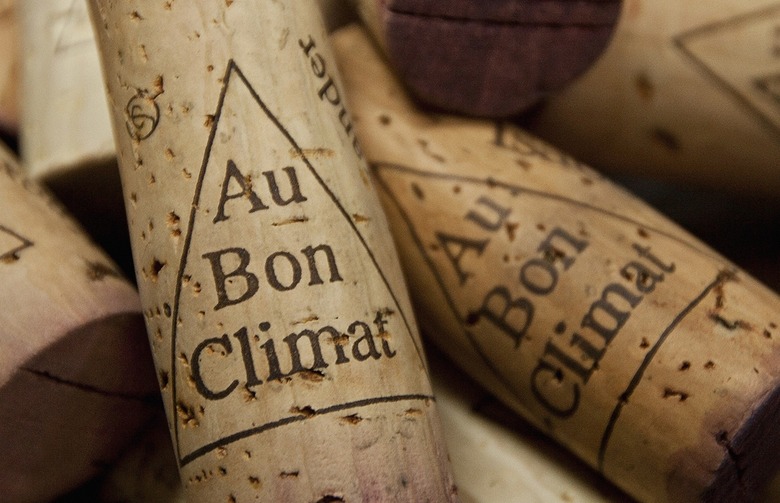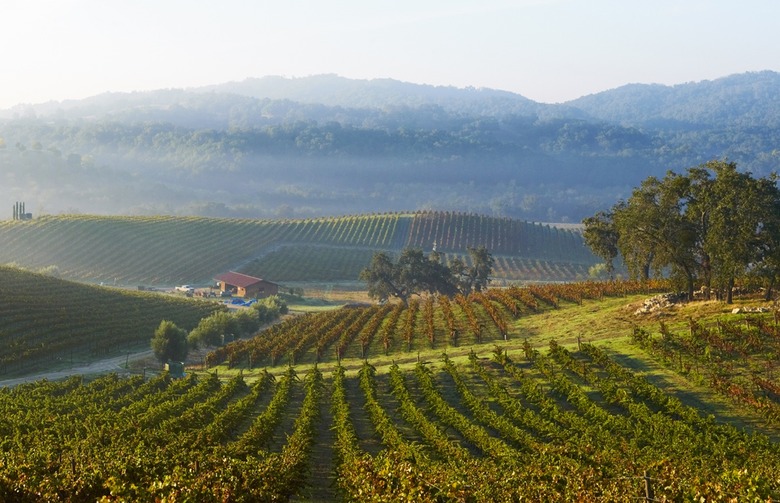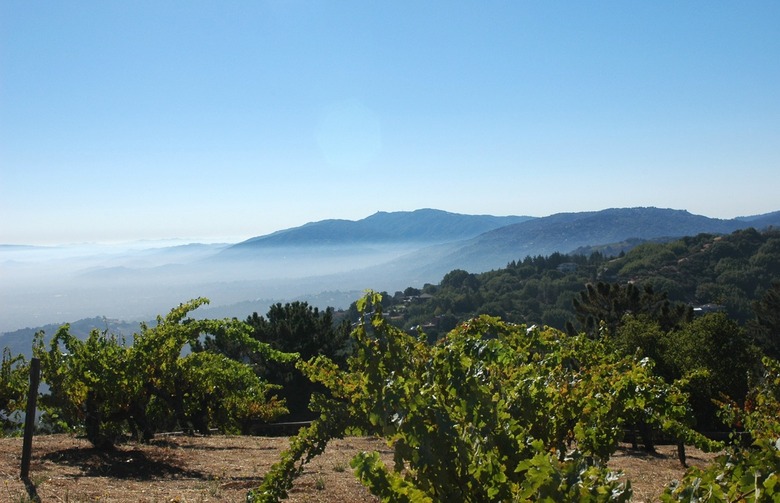101 Best Wineries In America 2016 Slideshow
The Jones family has farmed land in this corner of southern Connecticut, not far from New Haven, for more than 150 years, specializing in recent times in pumpkins, berries, and Christmas trees. Jamie Jones, representing the family's sixth generation, launched the winery (housed in a former Nike missile base) in 2004, after studying agriculture at Cornell University. He cultivates both vinifera and hybrid grapes — "the healthiest grapes possible in Connecticut's marginal climate," as Renée B. Allen, director of the Wine Institute of New England, a fan of the winery, puts it — and also uses some California juice, and makes several fruit wines. Jones' estate-grown Alsatian-style pinot gris and a predominately cabernet franc red wine (with some merlot and cabernet sauvignon) are tantalizing hints of what this unlikely wine country can produce, and a white blend of three hybrids, vidal blanc, seyval blanc, and cayuga white, will make tasters think twice about dissing the hybrid category. (A tart, rich black currant dessert wine is pretty good, too.)
100. Hope Family Wines, Paso Robles, Calif.
This multi-faceted Central Coast operation now produces the ever-popular Liberty School wines (for which they were once a grape supplier), along with the popular-priced Can-Dor and Troublemaker lines, but it shines with its Austin Hope Rhône-style wines (their roussanne is particularly successful) and its Treana line, which includes two whites made with Rhône varieties and a lush cabernet sauvignon–syrah blend.
99. Old Westminster Winery & Vineyard, Westminster, Md.
Jay and Virginia Baker first planted grapes on their family farm, northwest of Baltimore, only in 2011; 2012 was their first vintage — but from the start they earned plaudits for their well-focused, well-crafted wines. About half the grapes that go into the 2,500 cases of various wines they produce annually come from their own vineyards, which are sustainably farmed, at an elevation of 800 feet, on channery loam (filled with flat, thin fragments of various stones) over greenstone schist — a soil they believe is responsible for the minerality and intense aromatics their wines display. (The remaining grapes are sourced from neighboring vineyards.) The winery has won acclaim for its flinty albariño, its earthy cabernet franc, and several silky Meritage offerings, as well as an uncommon but successful blend of syrah and merlot and an unusual rosé made from the five principal Bordeaux varieties.
98. Ste. Chapelle Winery, Caldwell, Idaho
Oregon and Washington get all the attention in wine circles (quite rightly), but their neighbor to the east now boasts more than 50 wineries of its own — the largest being Ste. Chapelle, founded in 1975 when the very idea of Idaho wine sounded like a joke (and was used as one in several movies). Today, the winery — whose proprietors also own the nearby Sawtooth Winery — produces a wide range of agreeable everyday wines (riesling, sauvignon blanc, petit verdot, cabernet sauvignon, etc.) at bargain prices, but makes this list on the basis of its first-rate Panoramic grenache and syrah and its single-vineyard chardonnays, which are bright and full of varietal character.
97. Charles Smith Wines, Walla Walla, Wash.
When a super-fruity Washington state white wine with a wacky label and a silly name — Charles Smith's Kung Fun Girl Riesling — ends up in the top half of Wine Spectator's Top 100 wines for 2014, you know there's some pretty good winemaking going on. Charles Smith himself, a self-taught winemaker who looks like the rock-and-roll manager he used to be, is constantly refining his offerings — which currently include an herbaceous Lawrence Vineyard viognier, an inky Broncho malbec, and a mostly merlot blend, sourced from seven different Columbia Valley vineyards, called The Velvet Devil. Smith, who opened a 32,000-square-foot winery and event space in downtown Seattle last year — and whose motto is "It's just wine, drink it" — also bottles wine under seven other labels, including the all-chardonnay Sixto and Casa Smith, specializing in Italian red grapes — barbera, sangiovese, and primitivo.
96. Peay Vineyards, Cloverdale, Calif.
On a site in the far northwestern reaches of the Sonoma Coast — which this winery's owners admit is "remote. And kinda cold. And mountainous" — brothers Nick and Andy Peay and Nick's wife, winemaker Vanessa Wong, are producing organic wines of surprising quality. Peay specializes in chardonnay, pinot noir, and syrah, along with some viognier, marsanne, and roussanne. Their grapes are often some of the last picked in the region, remaining on the vine almost into November in some cases, but careful supervision results in balanced wines that have both intensity and focus.
95. Fall Creek Vineyards, Tow, Texas
This pioneering Texas Hill Country winery has made great strides since owners Ed and Susan Auler brought in Chilean winemaker Sergio Cuadra in 2013. Fall Creek's range of wines encompasses 20 or so different bottlings, from a bargain-priced sweet red wine under the Twin Springs label to a top-of-the-line merlot-cabernet sauvignon blend called Meritus and a series of premium Terroir Reflection offerings including one of the best Texas chardonnays (from a grape that can be challenging in Texas), an authoritative tempranillo, and a rich grenache–syrah–mourvèdre blend. The Daily Meal's wine contributor Andrew Chalk also appreciated the winery's 2015 Vintner's Selection sauvignon blanc, which he called "a delicate compromise between grassy New Zealand examples and fruity northern California examples..."
94. Peachy Canyon Winery, Paso Robles, Calif.
The Paso Robles area has been known for good zinfandel since the early twentieth century, when the famed Polish pianist Ignacy Jan Paderewski planted the grape on his 2,000-acre ranch there, and since 1988, Doug and Nancy Beckett have been doing the grape proud in the same region with a varied range of forthright red blends involving this protean varietal — as well as an austere York Mountain chardonnay and good cabernet sauvignon, among other wines. Señorita Vino blogger Pamela C. Pajuelo is also a fan of the winery's syrah, which she likes for its "gamey notes, a hint of white pepper, and beautiful cherry and violet on the palate."
93. Center of Effort, Arroyo Grande, Calif.
The center of effort is the theoretical sweet spot on a sail on which the force of the wind concentrates. The proprietors of this Edna Valley winery, Rob Rossi and Bill Swanson, may have been inspired by the nautical implications of the term, but they define it for their purposes as "the intersection of caretaking, skill and commitment" represented by their various chardonnays and pinot noirs — the only wines they produce (though there is also a pinot noir rosé). Señorita Vino blogger Pamela C. Pajuelo notes that the winery is "a caliber that makes it stand out among Central Coast wineries," and adds that she was immediately seduced by the first Center of Effort wine she tried, a 2011 chardonnay. "The nose is like a walk through an exotic spice market," she tells us, "and the finish is crisp and lasting — beautiful minerality with a trace of salinity; I bought a case on the spot."
92. Allis Ranch Winery, Sedalia, Colo.
Colorado is hardly the first state people associate with wine — especially these days, when it gets so much press for a different intoxicant — but the wine industry here dates back to the nineteenth century, and today there are at least 100 Colorado wineries, most of them tiny boutique operations like this one, located on a former cattle ranch. At Allis Ranch, David and Margaret Rhyne produce not much more than 400 cases annually, but their Rhône-style reds, based on roussanne, syrah, and grenache, are astonishing — complex, rich but delicate, full of bright fruit.
91. Dolin Malibu Estate Vineyards, Malibu, Calif.
Two years ago, the U.S. Alcohol and Tobacco Tax and Trade Bureau awarded AVA, or American Viticultural Area, status to the region called Malibu Coast, which extends up from the coastline high into the Santa Monica Mountains. Elliott Dolin was one of the leaders of the movement to recognize the area, which now boasts more than 50 mostly small-scale producers. Dolin, a onetime musician turned real estate investor, makes juicy, earthy pinot noirs from Central Coast grapes but his masterpiece is his estate-grown chardonnay, full of fruit and only lightly touched with oak. Dolin's production is tiny, but he's a serious winemaker and a poster boy for the possibilities of this corner of California, where the first grapes were planted in the early 1800s.
90. Bellwether Wine Cellars, Trumansburg, N.Y.
Cheryl and Bill Barton's Bellwether Hard Cider has been producing some of the country's best "hard" cider since 1999, as the first artisanal cider producer in the Finger Lakes. In 2013, they expanded their operation to encompass a small winery, specializing in riesling and pinot noir fashioned by winemaker Kris Matthewson. And what riesling! Bon Appétit called it "the best German-style Riesling outside of Germany." Another fan, Eduardo Bolaños, sommelier for the Terroni Group restaurants in Los Angeles, thinks they "drink as amazing as their Old World counterparts, [and] are a great value and extremely high quality." But, he adds, don't forget the pinot noirs; "I've mistaken them for Burgundy," he admits.
89. Callaghan Vineyards, Elgin, Ariz.
Harold and Karen Callaghan and their son, Kent, planted their first vineyard, southeast of Tucson near Fort Huachuca, in 1990 — just in time for a 105-degree-plus heat wave that destroyed their fledgling vines. They replanted, and tried to make Bordeaux-style wines through the latter part of the decade, but eventually admitted that the climate was just too harsh for any of the traditional Bordeaux varieties except petit verdot. They learned that Mediterranean varieties did much better, and began to concentrate on Spanish cultivars like tempranillo, monastrell (mourvèdre), and garnacha (grenache). Kent runs the winery today, producing wines of great character and intensity of flavor — tempranillo, mourvèdre, a syrah/mourvèdre/grenache blend called Backlot, a tempranillo blend (with some grenache and syrah) called Padres, even a single white wine, Lisa's, which combines viognier, marsanne, roussanne, malvasia bianca, fiano, picpoul blanc, and — a climatic curveball — riesling, into a richly textured only-in-Arizona delight.
88. Staglin Family Vineyard, Rutherford, Calif.
Vines were first planted on what is now the Staglin property in the 1860s. A century later, legendary winemaker André Tchelistcheff supervised the cultivation there of cabernet sauvignon vines for use in Beaulieu Vineyards' renowned Georges de la Tour Private Reserve. Garen and Shari Staglin acquired the land in 1985, and honored its heritage as prime cabernet territory. Dan Davis, "wine guy" at Commanders Palace in New Orleans, told us "I met Shari Staglin when I was seated next to her at a luncheon at the home of Christian Moueix in Bordeaux. It took less than an hour for me to fall in love with her, and I've found her family's wines to have every bit of the elegance, charm, strength, and generosity that she showed me that day." Critics agree that Staglin's wines are, as Davis puts it, "among the very best examples of Rutherford chardonnay and cabernet sauvignon."
87. Broc Cellars, Berkeley, Calif.
As Keith Beavers, self-described "chief wine geek" for Vinepair.com, told us last year, Broc's proprietor and winemaker, Chris Brockway, "is helping to define what is being called 'New California' wine. He plays around with all kinds of grapes, including the Languedoc native picpoul. He farms in the most natural way possible, coaxing wine out of low-energy facilities for the 'green' factor." Eduardo Bolaños, sommelier for the Terroni Group restaurants in Los Angeles, adds that "A lot of wineries like to focus on a couple of varietals and do them really well so as to maintain a great quality, but at Broc, they are working with close to a dozen different varietals and pulling off all of the different wines they make really really well." Among these wines are those made from such uncommon-in-California varieties as counoise, valdiguié, and nero d'avola, as well as a carbonic-maceration carignan and a splendid Rhône-style white blend called Love White (the grapes come from Love Ranch in Madera County) — among other offerings. Oh, and there's Brockway's "white zinfandel" — actually an excellent, bone-dry zinfandel rosé, guaranteed to disappoint anyone expecting one of those dull, sweet white zins that were once all too popular.
86. Channing Daughters Winery, Bridgehampton, N.Y.
This renowned Long Island winery has described its winemaking practices as "artisanal experimentation." That translates to a wide range of wines — white, red, rosé, "orange," fortified, filtered, unfiltered — from an even wider range of grape varieties. Channing Daughters is one of the few producers of tocai friulano in America (theirs is bone-dry, lively, and intensely aromatic), and the winery also grows, and makes good use of, such things as ribolla gialla, muscat ottonel, malvasia bianca, refosco dal penduncula rosso, blaufränkisch, lagrein, teroldego rotaliano, dornfelder, even an obscure old Bordeaux variety called segalin — all of it vinified superbly — not to mention some very good, straightforward sauvignon blanc, chardonnay, and petit verdot.
85. Va La Vineyards, Avondale, Pa.
Anthony Vietri is one of the more original winemakers in America. Over the past decade, he has cultivated more than two dozen French and Italian varietals and their clones in what he calls his "little vineyard" of slightly less than seven acres located amid the area's mushroom farms. They are unusual wines, to say the least, often benefitting from long aeration and none of them tasting quite like anything else you've tried. Who can imagine a blend of tocai, malvasia, viognier, pinot grigio, and petit manseng, or one of malvasia nero, barbera, sagrantino, carmine, lagrein, charbono, teroldego, and petit verdot? There is no reference point for these wines — but they are well-made, highly original, and mostly delicious.
84. Talley Vineyards, Arroyo Grande, Calif.
Third-generation farmer Brian Talley has run Talley since the winery was built in 1991, focusing on chardonnay and pinot noir from the Talley family's own vineyards. The pinot noir and chardonnay from the Talley estate vineyards — and especially the single-vineyard bottlings from their Rosemary's and Rincon plots — are consistently among their most desired and highly acclaimed offerings. "If any winery and family embodies what's good about family winemaking," chef–restaurateur Norman Van Aken once told us, "it's the Talleys. Farming rests in the fibers of their being, and their gorgeous wines provide the backbone of the Arroyo Grande Valley."
83. Tatomer Wines, Santa Ynez, Calif.
Chef-restaurateur Norman Van Aken (a member of The Daily Meal Council) is a big fan of Graham Tatomer's stylish wines. "He is rooted in Santa Barbara," says Van Aken, "but his winemaking embodies the crux of Austrian wine: extraordinarily textured rieslings and intensely mouth-watering grüner veltliners." That's all Tatomer makes — currently four iterations of riesling, two of grüner. They're elegant wines, with gorgeous fruit, good acidity, and hints of citrus and mineral character. The Kick-on Ranch riesling is particularly rich in flavor; Tatomer recommends decanting it.
82. Black Ankle Vineyards, Mount Airy, Md.
This newish Maryland producer — proprietors Ed Boyce and Sarah O'Herron had their first harvest in 2006 and opened their winery for business two years later — makes serious red wines, including Crumbling Rock, a Bordeaux-style blend with varying percentages of the usual grapes (plus a touch of syrah in some vintages); a syrah called Leaf-Stone (blended with a variety of other grapes in early vintages); Slate, a cabernet–syrah blend; and a cabernet franc called Viento. The winery also produces steely, fruity albariños, though, and a positively tropical multi-national white blend called Quartzite, combining grüner veltliner, chardonnay, albariño, muscat, and viognier. Finding wine of this intensity and complexity in Maryland gladdens our hearts.
81. Bokisch Vineyards, Lodi, Calif.
Markus and Liz Bokisch have translated their passion for Spanish wines — he spent his childhood summers in Spain and the two of them later worked for wineries in Catalonia's Penedès region — to California's Central Valley. Their wines, all certified "green" by the Lodi Rules for Sustainable Winegrowing program, include vivid interpretations of albariño, verdejo, verdelho, garnacha blanca, garnacha, tempranillo, monastrell (mourvèdre), and graciano (a comparatively minor but important red Rioja variety) — the 2012 iteration of which won a double gold at the California State Fair Wine Competition. With a new enterprise, Tizona Wines, the Bokisches are beginning to work with zinfandel and malbec, and promise "perhaps a sherry or even a cava at some point in the future."
80. Chateau Grand Traverse, Traverse City, Mich.
Riesling, from crisp and dry to gloriously sweet, is the calling card at this beautifully situated winery and inn, one of the oldest and largest wineries in Michigan and proof positive that the state can produce quality wine. Founded in 1974 by Edward O'Keefe, the winery also produces a range of white (the pinot grigio is notable), rosé (including a pinot noir vin gris), and reds, principally pinot noir and merlot. Chateau Grand Traverse was also the first Michigan winery to produce an ice wine, which was served at the 1989 inauguration of President George H.W. Bush. Oh, and let's not forget the line of cherry wines; Michigan produces three-quarters of America's tart cherries every year (and about a quarter of its sweet ones), and Grand Traverse knows what to do with them.
79. Pedroncelli Winery, Geyserville, Calif.
Family-owned since 1927, this venerable Sonoma County property helped earn the Dry Creek Valley its reputation as some of the state's best zinfandel land. Their "Mother Clone" zin, a regular high-scorer and prize-winner, is a legendary wine that delivers pure zinfandel character for less than $20 a bottle. (They also produce a "Dry Rosé of Zinfandel" that is remarkable.) Based on traditional Portuguese grape varieties, their Four Grapes Port is as close as anyone in America is coming to reproducing traditional vintage port from Portugal. Sauvignon blanc, chardonnay, cabernet sauvignon, easy-drinking white and red blends... They do it all, for prices that are hard to beat, without pretension and with a friendly smile for anyone who stops in at the winery.
78. Seven Hills Winery, Walla Walla, Wash.
Seven Hills founder Casey McClellan is a fourth-generation farmer whose focus is on vineyard-driven wines. In addition to cabernet sauvignons and Bordeaux-style blends of astonishing quality, he sources pinot gris from Oregon and viognier from Washington's Columbia Valley and produces sterling whites. Wine writer Gabe Sasso, a regular contributor to The Daily Meal, notes that "Seven Hills has been a Washington State staple for nearly 30 years," and opines that "their most impressive release is their cabernet sauvignon from Walla Walla, produced from a vineyard planted in 1980."
77. The Ojai Vineyard, Oak View, Calif.
Adam and Helen Tolmach have been making small lots of wine for more than 30 years now. The Tolmachs produce excellent chardonnays as well as some whites based on Rhône varieties, but their strength is in their award-winning syrahs and pinot noirs, sourced from some of the top vineyards around the Central Coast. Their faithful customers join their mailing list to assure themselves first crack at Ojai's small-lot offerings, but the winery also maintains an unusually large catalogue of library wines for those who prefer their wines more fully developed.
76. Favia Wines, Napa, Calif.
Winemaker Andy Erickson and viticulturist Annie Favia (husband and wife) have impeccable credentials: his résumé includes stints with Screaming Eagle and Harlan Estate; she spent 11 years working for the esteemed David Abreu, helping oversee vineyards for Harlan, Bryant Family, and more. It's not surprising, then, that when the two decided to start their own winery in 2003, it would quickly become a cult favorite in its own right. Seeking out just the right vineyards, they jointly make about eight wines — white and red, varietals and blends — using grapes from the Napa Valley and from Amador County in the Sierra foothills. The Lincoln, their Amador County grenache, and Rompecabezas (the name is Spanish for "brain-breaker" — i.e., puzzle), a blend of Amador grenache, mourvèdre, and syrah, are particularly noteworthy, and their punchy Napa Valley cabernet can stand up to anybody's.
75. Keplinger Wines, Napa, Calif.
It was a job helping to open a winery in Spain's Priorat region that connected Helen Keplinger with the region's traditional garnacha tinta (red grenache) grape. While she was working there, her husband, D.J., visited often and the two toured vineyards throughout southern France. After returning to the U.S. and working at several Napa Valley wineries, Keplinger established her own enterprise, focusing on grenache (especially) and syrah, but also incorporating other Rhône and Provençal varieties like roussanne, viognier, grenache blanc, and mourvèdre, producing wines that display complex layers of flavor and richness. Their Basilisk grenache packs real power; a red called Sumō, which the winery describes as "a Côte Rôtie twist on petite sirah" (the petite sirah is blended with syrah and a touch of viognier), is spicy and soft. The winery also produces an unusual dessert wine called The Holdout, an 80/20 blend of grenache and mourvèdre, fortified with grappa made from the Keplinger pomace and packaged in an antique-style bottle.
74. Shinn Estate Vineyard and Farmhouse, Mattituck, N.Y.
Owners Barbara Shinn (the vineyard manager) and David Page (the winemaker) David Page are pioneers of biodynamic viticulture on Long Island's North Fork (among other things, their property is solar- and wind-powered, and they employ native yeasts). As Keith Beavers, self-described "chief wine geek" for Vinepair.com, told us last year, "The wines they produce are a very true expression of what Long Island terroir has to offer." Renée B. Allen, director of the Wine Institute of New England, adds that "the owners are passionate about their wine and their environment, and give their time to help educate others about their philosophies." The wines they make — which include sauvignon blanc, chardonnay, pinot blanc, merlot, cabernet franc (the region's signature), and what Allen calls "an outstanding petit verdot" — are elegant and well-structured, and consistently some of Long Island's best.
73. Robert Mondavi Winery, St. Helena, Calif.
The late Robert Mondavi was one of the most important figures in the entire history of California winemaking — responsible more than anyone else for putting the Napa Valley on the map through the quality of his wines, his technological innovations, and his marketing savvy. When he sold his eponymous winery in 2004, four years before his death, to Constellation Brands (whose other properties range from New York's Manischewitz winery to Corona beer) for a reported $1 billion, some Mondavi fans feared that quality would plummet. Constellation, however, has remained true to the winery's legacy as a premium producer of a wide range of cabernet sauvignons, chardonnays, and other fine wines — including the landmark fumé blanc, a wine style invented for California by Mondavi himself.
72. Andis Wines, Plymouth, Calif.
Sacramento grocer and wine and food expert Darrell Corti, a member of The Daily Meal Council, hails this "newish winery in Amador County's Shenandoah Valley, with exciting freshness to its wines." The Andis vineyard was planted in 1978 and taken over in 2009 by real estate mogul Andrew Friedlander (whose commercial real estate company is the largest in Hawaii) and financial advisor Janis Akuna. Working with winemaker Mark McKenna, they built a state-of-the-art winery and began making what is probably the best sémillon in America, as well as excellent sauvignon blanc and a range of reds including a superbly concentrated estate zinfandel, a lush cabernet franc, and a spicy, chewy mourvèdre.
71. Wind Gap Wines, Sebastopol, Calif.
Pax Mahle's first winery, PAX, was famous for big, bold syrahs from California's warmer climate area. The onetime sommelier and former Dean & DeLuca corporate wine buyer has broadened his repertoire, though, adding the small-scale, allocation-only Agartha (named after a Miles Davis album recorded in Japan) to make "wild" syrah, cabernet sauvignon, and red and white Rhône-style blends, and this, his 6,000-case winery named for the breaks in hill ranges that funnel wind and influence the growing and ripening of the grapes. Wind Gap is dedicated to the exploration of cooler vineyard sites, which result in wines picked at lower sugar levels, with naturally lower alcohol. Grapes are bought from all over California and turned into such wines as an uncommon trousseau gris (a grape from eastern France, once bottled in California as gray riesling), an unusually vivid old-vines grenache, and several chardonnays and pinot noirs.
70. The Eyrie Vineyards, McMinnville, Ore.
The late David Lett started making his Eyrie pinot noir in Oregon's Willamette Valley in 1970, back when Oregon was better known for olallieberries and Olympia Beer than for anything vinous. He went on to turn his grapes into some of the most elegant, delicate, but full-flavored of American pinots, famously standing up to the celebrated Joseph Drouhin's Chambolle-Musigny in a taste-off in France (he lost by two-tenths of a point, inspiring Drouhin to later establish a winery in Oregon himself) and earning the sobriquet "Papa Pinot." (He is also credited with producing America's first pinot gris.) Lett's son Jason now makes wine at Eyrie, and the results are as good as ever. The English wine writer and Master of Wine John Atkinson recently tweeted, "If an alien asked me: 'What can Americans achieve?' I'd sit him down with a glass of Eyrie Pinot and a copy of As I Lay Dying." Well, all right, then.
69. Noceto, Plymouth, Calif.
Jim and Suzy Gullett bought their first Amador County vineyard in 1984, acquiring an additional plot next door three years later. After a year of sampling southern Rhône and northern Italian wines nightly with their meals — a "difficult" task, they assure us — they decided that what they liked most of all was Tuscany's definitive sangiovese. Sacramento grocer and wine and food expert Darrell Corti arranged for them to visit top Tuscan producers and later found them sangiovese cuttings. After making nine vintages at borrowed facilities, they built their own winery in 1999. Today they make a pinot grigio, a barbera, a zinfandel, and a port-style wine (from traditional Portuguese varieties) but their pride and joy are what Corti calls their "lovely, typical sangioveses" — six different ones (plus a rosé), earthy and full of flavor. Extra points for "bottling" their basic version not just in glass but in a three-liter box, for the equivalent of $15 a bottle.
68. Hermann J. Wiemer Winery, Dundee, N.Y.
"If you want to experience some of the top rieslings from the Finger Lakes," advises wine educator and blogger Elizabeth Schneider, "run, don't walk to Wiemer. They showcase all the best that Finger Lakes has to offer – a mineral lightness against a backdrop of excellent fruit flavor and balanced acidity." Wiemer, who grew up in Germany's riesling-producing Moselle region, can be credited at least partially with turning the Finger Lakes into serious wine country. Wiemer himself retired in 2007, but the winery is now in the hands of his longtime apprentice, Fred Merwarth, who continues to uphold the standards Wiemer established. Besides eight or 10 different rieslings, dry and sweet, the winery also essays chardonnay, gewürztraminer, and grüner veltliner successfully, and several chardonnay- and/or pinot noir-based sparkling wines, still pinot noir, cabernet franc, and an unusual Field Cuvée that blends cabernet sauvignon, cabernet franc, pinot noir, merlot, and lemberger into a very drinkable table wine.
67. Arnot-Roberts, Healdsburg, Calif.
Arnot-Roberts, at the forefront of today's natural winemaking trend in California, is a collaboration between childhood friends Duncan Arnot Meyers and Nathan Lee Roberts. Both grew up in Northern California, explored different facets of the wine industry, and came together to found their joint namesake winery in 2001. Their wines, all fermented with natural yeasts and bottled unfined and unfiltered, include single-vineyard wines from common varieties like cabernet sauvignon, syrah, and chardonnay, but also wines from grapes not typically seen in the area: including the Portuguese red wine varieties touriga nacional and tinta cão. These wines tend to be sommelier favorites.
66. Michael Shaps Wineworks, Charlottesville, Va.
Michael Shaps is a veteran of Virginia's well-regarded King Family Vineyards and Jefferson Vineyards, and also a partner in Maison Shaps Winery in Meursault — prime Burgundian chardonnay country. Together with winemaker and general manager Jake Busching, another Virginia wine veteran, Shaps is becoming recognized as one of the Commonwealth's most exciting producers.
Wine writer Gabe Sasso, a regular contributor to The Daily Meal, calls Shaps an "impressive Virginia producer" and notes that "they are crafting reds which are structured and often age-worthy." These include a genuinely French-tasting Meritage, and more than credible cabernet franc, merlot, and petit verdot — as well as what may well be America's best version of tannat, the main red wine grape of France's Madiran region (and of Uruguay). "Among their whites," says Sasso, "the standout is a single-vineyard petit manseng. If you have yet to realize that Virginia is growing some world-class wines, here's all the proof you need in one stop."
65. Navarro Vineyards and Winery, Philo, Calif.
"Ask folks in Sonoma what their favorite winery in the area is and many of them will tell you to head to Philo in Mendocino County and visit Navarro," wine educator and blogger Elizabeth Schneider once proposed. Navarro virtually owns gewürztraminer in California these days, making a dry, intensely aromatic, bright and clean example that can stand up to its Alsatian inspirations quite nicely, as well as some of California's best zinfandel (it has won a gold medal and best in class designation from the Zinfandel Producers of America) and excellent chardonnays and pinot noirs — including an unusually good pinot noir rosé. Prices are modest and, Schneider notes, "The best part: they regularly offer penny shipping to those of us who have to order rather than visit the winery!"
64. Scribe Winery, Sonoma, Calif.
German immigrant Emil Dresel planted what may have been the Sonoma Valley's first vineyard on the site now occupied by Scribe, back in the 1860s. Fourth-generation California farmer brothers Andrew and Adam Mariani bought the land in 2007 and set about creating a sustainably farmed property that would produce wines expressive of the terroir with what the call "non-interventionist methods." No less a champion of sustainability and terroir than Alice Waters of Chez Panisse calls this winery one of her favorites. Their luscious chardonnays (including a skin-fermented version in an unusual bottle), juicy pinot noirs, and even bright and minty St. Laurent (made from a notable Austrian red variety) leave little doubt what she finds so appealing.
63. Ponzi Vineyards, Sherwood, Ore.
"Dick Ponzi founded the Ponzi winery in the Willamette Valley in 1970 when there were only three or four other wineries there," Daniel Johannes, corporate wine director for Daniel Boulud's New York-based Dinex Group, told us last year. "A true pioneer, he opened the door to introduce Oregon as one of the premier pinot noir producing regions of the world." In addition to half dozen beautifully blended, intense, and remarkably consistent pinot noirs, ranging from the budget-friendly Tavola to stunning reserve blends, second-generation winemaker Luisa Ponzi (the first American woman to receive a prestigious enology and viniculture certificate from Beaune, France) also creates an impressive range of white wines, including chardonnay, pinot gris, pinot blanc, arneis, and riesling.
62. Gruet Winery, Albuquerque, N.M.
The Gruet family had already been producing produced Champagne in Bethon, near Épernay, for 30 years when they first visited the American Southwest in the 1980s. To their surprise, they discovered chardonnay and pinot noir vines being cultivated successfully at high altitude about 150 miles south of Albuquerque. They planted their own vines and began making sparkling wines in the classic methode traditionelle, relying on the low humidity to prevent rot, and the cool nights at 4,300 feet above sea level to slow ripening of the grapes for greatest complexity. The results have been wonderful. Today, Gruet produces a range of what Sacramento grocer and wine and food expert Darrell Corti calls "splendid sparklers," both vintage and non-vintage, including an ethereal rosé, fairly priced and reminiscent of wines made back home in the Champagne region.
61. Sandlands, Napa, Calif.
Tegan Passalacqua and his wife, Olivia, dedicate this winery to "the forgotten classic California varieties" — by which they mean grapes like chenin blanc, carignane (as they spell it), and trousseau noir (best known in France's Jura region, but long used in the production of California port). Darrell Corti, the Sacramento-based grocer and wine and food expert, calls Sandlands wines "perhaps the best-made in California" — which sounds like a lot to live up to, until you realize that Tegan is the director of winemaking for the esteemed Turley Wine Cellars (No. 11 on this list)... and until you taste the wines. The trousseau noir is light, silky, and intensely fruity, a bit reminiscent of a top-level Fleurie; the smoky, mineral-tinged Contra Costa County carignane is old-school California-intense; and the Amador County chenin blanc has so much strength of character and sheer deliciousness of fruit that you'll wonder why this variety ever faded from popularity in the U.S. Wonderful stuff.
60. Chehalem Winery, Newberg, Ore.
Sustainability is the watchword here. The winery is LIVE (Low Input Viticulture and Enology) certified and part of Oregon's Carbon Neutral Challenge Initiative; a lengthy sustainability statement on their website outlines many other "green" programs they are participating in. All very well and good, but how are the wines? Vintage after vintage, some of the very best from the Willamette Valley. Their Stoller Vineyards pinot noir (one of a number of their expressions of the grape) is wonderfully ripe, fresh, and chewy; their grüner veltliner is one of the very best American interpretations of that grape; their INOX (stainless steel) chardonnay is a pleasingly tart, lightly honeyed reminder of how good unoaked chardonnay can be.
59. Jaffurs Wine Cellars, Santa Barbara, Calif.
Craig Jaffurs sources grapes from some of Santa Barbara County's best vineyards and consistently releases hearty, well-balanced, Rhône-style vintages — for instance, a rich, citrusy Stolpman Vineyard roussanne, a vivid Thompson Vineyard grenache blanc, eight different syrahs, and a luscious late-harvest Vogelzang Vineyard viognier — as well as, just for contrast, a very nice Mistress Pinot Noir, made with grapes sourced from the legendary Bien Nacido Vineyard. This is a winery that seems to get better with every vintage.
58. Foxen Vineyard and Winery, Santa Maria, Calif.
Named for English sea captain William Benjamin Foxen and run by his great-great grandson, Dick Doré, and co-owner and winemaker Bill Wathen, Foxen Vineyards is historic in every sense of the word. And the "Foxen Boys," as the two men are known, continue to make history, first as early adopters of sustainable agriculture and, recently, with the addition of solar power in the winery and tasting room. Foxen offers dependably good chardonnay and pinot noir and a range of single-vineyard syrahs, but also such delights as a serious old-vines chenin blanc, a delightful mourvèdre rosé, and an unusual dessert wine made from (historic) mission grapes.
57. Rochioli Vineyards and Winery, Healdsburg, Calif.
One of Sonoma County's truly outstanding producers of single-vineyard wines, family-owned Rochioli is best known for its pinot noirs, and both the estate bottlings and the smaller lot offerings (especially the gloriously ripe and fruity West Block) are memorable wines year after year (Wine Spectator dubbed their 1985 pinot the best pinot noir in America). The winery's sauvignon blanc (made from some of California's oldest sauvignon blanc vines) and assorted chardonnay bottlings are regularly scored in the 90s by the most influential wine critics, as well.
56. Hanzell Vineyards, Sonoma, Calif.
This legendary property in the Mayacamas Mountains was founded in 1953 by James David Zellerbach — chairman of the board of the Crown Zellerbach paper company and later U.S. ambassador to Italy — who planted chardonnay and pinot noir grapes with the intention of making wines that would rival those of Burgundy, back when many of today's California would-be Burgundians were still drinking out of baby bottles. Many early reviewers felt that he succeeded, thanks in large part to the efforts of winemaker Brad Webb. Today, Hanzell — under new ownership, and with Michael McNeill as winemaker and Lynda Hanson as his associate — still deserves a place of honor for its Ambassador's 1953 Vineyard Chardonnay and other richly textured, eloquently complex offerings. A newer offering is the winery's Sebella chardonnay, sourced from young vines, fermented in stainless steel, and aged in neutral French oak.
55. Beckmen Vineyards, Los Olivos, Calif.
One of Santa Barbara County's top specialists in Rhône-style wines, Beckmen isn't a flashy producer, but it offers an ample range of well-crafted, well-balanced wines, all estate-grown, consistent in quality and vivid with varietal character. Standouts include a lively, mineral-edged grenache blanc; an aromatic, dark and full-bodied Block Eight grenache; and a proprietary Rhône blend called Cuvée Le Bec that pretty much defines the genre. (Straying outside the Rhône genre, Beckmen also makes nice chardonnay and cabernet sauvignon.)
54. Dr. Konstantin Frank Vinifera Wine Cellars, Hammondsport, N.Y.
The late Dr. Frank championed vinifera grapes in the Finger Lakes back when everybody else was convinced that only native lambrusca varieties and perhaps French-American hybrids could be grown there. Frank silenced his critics with his first release in 1962, a johannisberg riesling made from late-harvest grapes affected with so-called "noble rot" in the style of the great German Trockenbeerenausleses. He planted some 60 vinifera varieties in all, and today European wine grapes are taken for granted in the region. Frank's son, Willy, took over the winery after the founder's death, and today his children, Fred (the winery president) and Barbara (consulting winemaker) are in charge. Whites remain, as they have always been, the winery's strong suit — Sacramento grocer and food and wine expert Darrell Corti calls them "impeccable whites with history behind them" — and the gewürztraminer, pinot gris, and grüner veltliner, among other wines, are all dependably good, as is the aromatic, exotic rkatsiteli, made from a grape Frank grew familiar with when he made wine as a young man in Soviet Georgia. Among the winery's reds, old-vine pinot noir does best.
53. Domaine Serene, Dayton, Ore.
Founded in 1989 by Ken and Grace Evenstad, a couple of Burgundy-loving Minnesotans transplanted to the Pacific Northwest, Domaine Serene was an early star in the Willamette Valley. Their mission is no less than to produce the best chardonnay and pinot noir in Oregon; they've got some stiff competition, but their wines routinely score 90+ points from all the major critics, and their 2008 Grace Vineyard Pinot Noir was given 97 points by Wine Spectator, the highest score ever won by an Oregon pinot. Daily Meal contributor Andrew Chalk recently tasted the 2013 Evenstad Reserve Chardonnay and 2012 Evenstad Reserve Pinot Noir; he found the chardonnay to have "bright acid, intense fruit flavors that are nonetheless not so ripe as to border on tropical fruit, solid phenolic backbone, and a long creamy and vanillin finish"; the pinot noir showed "finesse and elegance...[and] soft raspberry and strawberry fruit on top of a forest floor layer of herbal notes." The winery also makes a rare example of white pinot noir called Coeur Blanc that could ignite a fad for this delicious style.
52. Neyers Vineyards, St. Helena, Calif.
As national sales director for the celebrated Northern California wine importer Kermit Lynch, Bruce Neyers is constantly exposed to some of the best wines of (among other places) Bordeaux, Burgundy, and the Rhône, and he and his young winemaker, Tadeo Borchardt — hailed by the San Francisco Chronicle as a "winemaker to watch" — make finely crafted wines in the traditional French style that play in the same league. Sourcing grapes from Napa (including the Neyers property), Sonoma, and the Central Coast, the winery produces, among other things, award-winning cabernets, serious chardonnays with moderated oak (the 304 bottling is oak-free), a couple of elegant pinot noirs, an unusually complex grenache, and a bold carignan.
51. Swanson Vineyards, Rutherford, Calif.
Swanson describes one of their most popular and successful wines as "a cab-lover's merlot." For close to 30 years, the winery has indeed been producing merlot that has all the authority and structure of its sister grape. Some call it the best merlot in Napa Valley, delicious upon release but also worth aging. That's just the beginning of Swanson's offerings, however. There's the eloquent sauvignon blanc, the textbook Napa chardonnay, the sangiovese and zinfandel and petite sirah, the late-harvest sémillon and late-harvest chardonnay.... Everything Swanson Vineyards does is handled with panache and grace.
50. Inwood Estates Vineyards, Fredericksburg, Texas
Inwood's owner and winemaker, Dan Gatlin, was one of the first winemakers, along with West Texas vineyard owner Neal Newsom, who demonstrated over a decade ago that tempranillo was the grape with the most potential in the Texas High Plains. Last year, he produced a chardonnay (a grape that has historically not been a great success in Texas) that is a ringer for good Chablis — from grapes grown in Dallas County. "Note that Gatlin's reds are best after at least a decade of age," cautions Texas-based wine writer and Daily Meal contributor Andrew Chalk, "and not showy while young." Chalk adds, "Even with the highest prices in the state, Gatlin always sells out and every top Texas restaurant has an Inwood wine on the list."
49. Andrew Murray Vineyards, Los Olivos, Calif.
Andrew Murray has earned his reputation as one of the most adept of the so-called Rhône Rangers with his affordable but exquisite single-vineyard syrahs, mourvèdres, grenaches, and cinsaults, and his excellent viognier, his roussanne-and-grenache-blanc Enchanté, and his mostly cinsault Espérance rosé. "At a time when many California wines seem to be priced proportionally to their producers' egos," Robert Parker wrote in Murray's early days, "...Murray's offerings are a breath of fresh air given their exceptionally high quality and realistic prices." Murray's awkwardly monikered "This Is E11even" wines (the name is a convoluted reference to This Is Spinal Tap) stray into non-Rhône varietals, including sauvignon blanc, cabernet sauvignon, and pinot noir, but also offer a lot of wine for the money.
48. Mount Eden Vineyards, Saratoga, Calif.
John Tilson of The Underground Wineletter describes Mount Eden as "a pioneer California winery that produces consistently great chardonnay, pinot noir, and cabernet sauvignon all from the same area. This is a remarkable achievement, and the wines are made in a very traditional way and improve with age over decades." Mount Eden sits perched on a mountaintop overlooking Silicon Valley, at an altitude of 2,000 feet. First planted with pinot noir and chardonnay three-quarters of a century ago, before anyone had heard of microchips, the winery now makes concentrated, balanced wines from these same old vines — as well as the cabernet Tilson mentions, an outstanding example that takes advantage of naturally low yields due to the soil's high proportion of Franciscan shale.
47. Barboursville Vineyards, Barboursville, Va.
Zonin, Italy's largest privately owned wine production company, recognized the potential of Virginia as a wine region decades ago, founding this attractive property, which has become one of state's biggest and best, in 1976. Getting the best European grape varieties to behave well in this corner of the continent has been a challenge since the days of Thomas Jefferson (who tried and failed), but after almost 40 years working with the soil and climate here, Gianni Zonin and his team have figured it out. Wine educator and blogger Elizabeth Schneider hails winemaker Luca Paschina for his "tasty whites (the vermentino is outstanding) and restrained, ageable reds from vineyards surrounding Jefferson's former home." She adds that "the nebbiolo is the best expression of the grape outside of Piedmont that I've had, and the Octagon [the winery's Bordeaux blend], especially the older versions, will make you think you're drinking an old Bordeaux."
46. DeLille Cellars, Woodinville, Wash.
This gem of a winery, which produces its wines mainly from selected vineyards in the Yakima Valley, and more specifically the Red Mountain and Snipes Mountain AVAs, is famous for its well-balanced, terroir-driven style, frequently described as European in character. "You won't find better cabernet sauvignon-based blends in Washington State," says wine educator and blogger Elizabeth Schneider. "Restrained, earthy, but fruity, with moderate tannin and acid, these wines will make you think you're drinking Bordeaux, not a New World wine." She adds that the Rhône-style wines bottled under the Doyenne label are also outstanding. "The syrah and roussanne have all the herby, soft, complex notes you'd want, with ample fruit – they're Rhône wines, Washington style! "
45. Ken Wright Cellars, Carlton, Ore.
U.C. Davis enology and viticulture graduate Ken Wright made wine at Ventana Vineyards and Talbott Vineyards in Monterey County before moving north to the Willamette Valley and founding his own winery in 1994. He makes nice pinot blanc and chardonnay and a memorable syrah from Walla Walla, Washington — but his heart and his skill is in his single-vineyard pinot noirs, always some of Oregon's best. Chef–restaurateur Norman Van Aken, a great champion of Wright's wines, likes him because "he believes strongly that great things happen in wine where there exists a commitment by the vineyard owner to the vineyard's individual voice and to a place's overall soul."
44. Tensley Wines, Los Olivos, Calif.
Joey Tensley first gained attention as the precocious winemaker at Beckmen Vineyards (No.55 on this list), but started making his own wine in 1998 and has blossomed into one of the Central Coast's vinicological stars. His own small production includes a delicious roussanne/grenache blanc blend called Tensley Blanc and a bright and charming grenache, but it's clear that Tensley's favored medium is the syrah grape. He currently produces five different ones, sourced from a number of top local vineyards, and they are unfailingly first-rate. Under the secondary Los Padres label, Tensley also sells bargain-price viognier and a red wine blend.
43. Boundary Breaks Vineyard, Lodi, N.Y.
If you don't like riesling, this winery has nothing to show you. Their motto is "Riesling, no other" — and all they produce is single-vineyard, single-clone examples of that wine (with one exception, their Ovid Line North, which uses four different clones), dry to late-harvest sweet. Chef-restaurateur Norman Van Aken likes them because they're "hyper-focused and completely groundbreaking," and have "turned their dedication to their vineyard and love for the riesling grape into a project that not only is a revelation for the Finger Lakes region, but one that is helping redefine the potential of all emerging American AVAs."
42. Red Newt Cellars, Hector, N.Y.
Riesling reigns supreme in the Finger Lakes, and Red Newt Cellars is producing benchmark examples of the wine. David and Debra Whiting founded Red Newt in 1998, establishing both a bistro that Debra quickly turned into the top restaurant in the area and a winery where David could craft vineyard-specific rieslings, along with gewürztraminer, pinot gris, merlot, and cabernet franc — and a port-style wine called Hellbender, made with cabernet franc, merlot, syrah, cabernet sauvignon, and a drop of pinot noir. Now under the oversight of winemaker Kelby Russell, the rieslings of Red Newt show incredible balance and acidity. (In 2014, Russell and Red Newt collaborated to launch a side project, Kelby James Russell Wines, whose first release was a well-reviewed cabernet franc rosé.)42. Red Newt Cellars, Hector, N.Y.
41. St. Supéry Vineyards and Winery, Rutherford, Calif.
Started in 1982 by noted Languedocien wine producer Robert Skalli, St. Supéry combines a strong ethical stance with their remarkable portfolio of wines — more than 40 different ones, including one of America's best malbecs, first-rate sémillons and sauvignon blancs, and a range of cabernet sauvignons, merlots, and Bordeaux blends that are as good as anyone's. This family-owned business is California Sustainable Certified, and St. Supéry's sustainably farmed 500 acres of vineyards are surrounded by nearly 1,000 acres of untouched land that Skalli believes should be left that way. Oh, and the wines produced here consistently earn scores in the 90s from top wine critics.
40. Sandhi Wines, Santa Barbara, Calif.
This property, founded in 2010 by former sommelier turned winemaker Rajat Parr, winemaker Sashi Moorman, and boutique-winery mogul Charles Banks, makes chardonnays and pinot noirs exclusively, combining fruit from some of the oldest vines in the Santa Rita hills, including the storied Sanford and Benedict vineyard, with grapes from the area's newer plantings. The chardonnays are characterized by clean flavors and acidity and distinct fruit and mineral notes; the pinot noirs are deep and complex, with fresh dark fruit and a hint of mineral bite, emblematic of the area's soil and foggy cool weather. This is a winery that has only just begun to make its mark.
39. Evening Land Vineyards, Dundee, Ore.
Hollywood producer Mark Tarlov started Evening Land in 2005 with the original goal of showcasing pinot noir and chardonnay in three unique wine growing regions: Oregon's Eola-Amity Hills, California's Sonoma Coast, and Burgundy's Côte d'Or. Today, Evening Land's focus is entirely on Oregon, and in particular the Seven Springs Vineyard, which consistently produces complex, mineral-driven wines. Winemakers Rajat Parr and Sashi Moorman are producing fresh, bright, almost electric chardonnay and earthy but supple pinot noir that ranks with Oregon's best.
38. Duckhorn Vineyards, St. Helena, Calif.
In a region dominated by cabernet sauvignon, Duckhorn Vineyards bucked the trend and made a special commitment to merlot, inspired by co-founder Dan Duckhorn's love of the grape. With his then-wife, Margaret Duckhorn, he established the winery in 1976, and now produces single-vineyard, single-varietal wines from Bordeaux varietals, especially merlot, but also cabernet sauvignon and sauvignon blanc. The wines are crafted with excellence and express the specific terroirs of each vineyard site. Since its tightly focused early years, Duckhorn has taken flight, now producing wine under five other labels: Paraduxx ("bold and expressive Napa Valley blends"), Goldeneye (Alexander Valley wines, including a brut rosé sparkler), Migration (chardonnays and pinot noirs from around California), Decoy (a range of "ready-upon-release" varietals from both estate vineyards and other sources), and Canvasback (cabernet sauvignon from Washington state).
37. Domaine de la Côte, Lompoc, Calif.
This spinoff from Evening Lands Vineyards (No. 39 on this list), now owned by winemakers Sashi Moorman and Rajat Parr and their partners, encompasses six vineyards over 40 acres of incredibly varied terrain in the far western part of the Santa Rita Hills. With only three vintages released, Domaine de la Côte is producing what Sacramento grocer and wine and food expert Darrell Corti calls "lovely pinot noir from improbable vineyards." The wines show outstanding minerality, complexity, and energy. Though the top vineyard-specific bottlings — mostly allocated to restaurants — are very hard to find, we can only hope that availability will increase with subsequent vintages. For pinot noir-lovers, this is definitely a winery to watch.
36. Patz & Hall, Sonoma, Calif.
For more than 25 years, Patz & Hall has focused squarely on just chardonnay and pinot noir. Their portfolio contains a few cuvée-style offerings, but the lion's share of what they do is single-vineyard wines. Most of their fruit comes from Napa or Sonoma, but one of their best-known pinots hails from the Pisoni Vineyard in the Santa Lucia Highlands. Their Hudson Vineyard chardonnay is regularly lauded as one of the best in its category. "Patz & Hall is distinctive among California wineries," offers chef-restaurateur Norman Van Aken, "in no small part because they were highlighting the individual terroir of select vineyard sites before anyone thought that was cool. Their wines are layered, complex, utterly pure, and perfectly in balance."
35. Bergström Winery, Newberg, Ore.
Founded in 1999 by John and Karen Bergström, along with their son Josh, in an attempt to create a family business that would remain as a legacy for future generations, this admirable Willamette Valley winery remains family-owned, with Josh acting as winemaker and general manager and his wife, Caroline, managing sales. The Bergströms like to say that each of their wines is a "snapshot" — an expression of the grape, terroir, and vintage that cannot be exactly replicated. What comes out of the vineyards, then, is vitally important — hence the winery's dedication to biodynamic practices in the production of their vineyard-specific pinot noirs, chardonnays, and rieslings. Each bottling is unique, but the wines unerringly share both finesse and balance. For wine writer Gabe Sasso, a regular contributor to The Daily Meal, "The most impressive wine in their portfolio is Sigrid chardonnay. This is a reference-quality wine that drops the gauntlet and sets a mark for others to aim for — beyond impressive."
34. Copain Wines, Healdsburg, Calif.
Perched on a hill with a breathtaking view of the Russian River Valley, Copain is producing extraordinary wines. Winemaker Wells Guthrie apprenticed with Michel Chapoutier in the Rhône, and his mastery of his craft is in evidence at every price point, from the simpler Tous Ensemble wines (the pinot noir rosé is a delight) to the refined and elegant blends of the Les Voisins series and the limited varietals of the Estate series. The fact that Guthrie creates food-friendly wines is doubtless responsible for his vintages' pride of place on the lists at restaurants like the Napa Valley's French Laundry and New York City's Le Bernardin. Copain continues to impress us with the elegance and drinkability of its offerings.
33. Spottswoode Winery, St. Helena, Calif.
Mary Novak and her daughters, Beth Novak Milliken and Lindy Novak, have been growing grapes on their historic Napa Valley estate since 1972, and turning them into some of the best, most elegant, most highly praised sauvignon blancs and Bordeaux-style cabernet sauvignons imaginable. Head winemaker and vineyard manager Aron Weinkauf oversees the estate's 24 separate vineyard blocks and dependably produces critically acclaimed, beautifully balanced wines. The cabernets, especially, are so good that the world's most influential wine critic, Robert Parker, was once moved to say that "if Château Margaux were in Napa Valley, it would be Spottswoode."
32. Acorn Winery, Healdsburg, Calif.
"Year after year after year, this is my favorite Sonoma producer," says wine educator and blogger Elizabeth Schneider. "Why? Bill Nachbur [who owns this sustainably farmed property with his wife, Betsy] is an intellectual who understands his land and the art of winemaking so well that each wine is like work of art. Each one is expertly crafted and achieves a balance of fruit, acid, tannin, and expression of the land. Bill's handle on how to use oak to augment, rather than take over, his field blends is nothing short of remarkable. And the consistency of quality across the line is impressive. A true gem." The winery's cabernet franc expresses a refinement not always found from that grape; the sangiovese is convincingly Italian in character. Those field blends, however, are truly unique. The Acorn Hill is almost a 50–50 blend of syrah and sangiovese but has dribbles of viognier and the Tuscan red varieties manolo and canaiolo. The Medley goes wild, combining syrah, zinfandel, cinsault, sangiovese, muscat, viognier, dolcetto, alicante bouschet, and a 5 percent dose of "other varieties." These are great fun to drink.
31. Corison Winery, St. Helena, Calif.
There's been a recent uptick in female winemakers in California, but Cathy Corison of Napa's Corison Winery is one of the originals: she's been making critically acclaimed cabernet sauvignons for three decades. Her two cabernets — a Napa Valley entry and a site-specific Kronos Vineyard bottling — consistently show depth, power, and a signature restraint, with alcohol levels in the modest 13.5 percent range, which is increasingly rare these days. Other wines from Corison include a Napa cabernet franc under the Helios label and a cabernet rosé and sassy Anderson Valley gewürztraminer under the Corazón label. All remain standard-bearers in their class.
30. Stony Hill Vineyard, St. Helena, Calif.
Stony Hill Vineyards founders Eleanor and Fred McCrae made a commitment back in the late 1940s to chardonnay, at a time when there were only about 200 acres of it planted around California. They were determined to make a fruity, non-malolactic, Burgundian-style wine, with just a hint of oak, and they succeeded, creating lovely, Chablis-style chardonnays that can actually spend time in a bottle without losing quality. They also became known for a very nice white riesling, back in the days when small California producers still bothered with that grape. Today, Stony Hill remains a family concern, run by the McCreas' son and daughter-in-law, Peter and Willinda McCrea. In recent years, the winery has developed a reputation for rich but well-balanced cabernets, but the chardonnay remains the star. As "wine guy" Dan Davis of Commanders Palace in New Orleans puts it, it's "possibly the most food-friendly wine in California, a dead ringer for Grand Cru Chablis, and it will age delicately for decades."
29. Forlorn Hope, Napa, Calif.
Winemaker-proprietor Matthew Rorick, who has made wine in New Zealand, South Africa, Chile, and around California, farms his own vines but also likes to work with "a handful of growers across the north of the state whose plantings might otherwise be bismits; the uncommon sites and varieties that pay tribute to Calfifornia's eclectic and often unexpected viticultural heritage." Thus his Nodosaur, a field blend of picpoul, verdelho, albariño, and muscat; his Suspiro del Moro, made from the Portuguese red variety alvarelhão; and his perfumey trousseau noir. David Sawyer, sommelier at Husk in Charleston, hails some of Rorick's earlier efforts. "His 2012 Sihaya skin-fermented ribolla gialla was Prinčič-esque [a reference to top Friuli producer Dario Prinčič] and insanely delicious —pickled apricot, chamomile tea, parmesan, oxidized almond, musky earth — and with wines like his Kumo To Ame Rosé of Mondeuse and Heritage Vineyard Trousseau Noir, Rorick continues to give the world wines of rare character."
28. Saxum Vineyards, Paso Robles, Calif.
Young Justin Smith launched his winery in 2002 on a family-owned hillside vineyard in which the terraces had to be carved out of rock that had once been ocean bed (fossilized whale bones uncovered in the process). Smith's wines were almost an immediate critical success. Today he produces 4,000 to 5,000 cases of red Rhône varietals annually — grenache, mourvèdre, and syrah — both single varietals and blends. Try his dense and delicious 2013 James Berry Vineyard Bone Rock Syrah (the name is a reference to those whale remains), 80 percent syrah with the balance filled out by mourvèdre, grenache, and roussanne — if you're fortunate enough to find a bottle.
27. Mayacamas Vineyards, Napa, Calif.
The Mayacamas Mountains separate Napa and Sonoma; they're also the site of some spectacular vineyard sites. Charles and Ali Banks (who formerly owned a little operation called Screaming Eagle) purchased this venerable winery, with its 125-year history, in 2013, with a goal of crafting well-regarded mountain wines based primarily on cabernet sauvignon and chardonnay, long the winery's signature varietals. (There are also smaller quantities of sauvignon blanc, merlot, and pinot noir.) Mayacamas remains a Napa Valley classic. As chef-restaurateur Norman Van Aken puts it, "Timeless and true to a destiny, Mayacamas wines today express the ineffable character of mountain fruit and artisanal care."
26. Littorai Wines, Sebastopol, Calif.
Heidi and Ted Lemon founded their winery in 1993, with the idea of producing refined chardonnays and pinot noirs from distinct vineyards in Sonoma and Mendocino counties. Considering themselves to be winegrowers more than winemakers, they have their own take on sustainable farming practices and are more concerned with being stewards of the land than with specific certifications. The results of this philosophy end up in the bottle, and they're all good. Lemon worked in Burgundy for Domaine Dujac in Morey St. Denis, Guy Roulot in Meursault, and Domaine Roumier in Chambolle-Musigny, and his wines have a Burgundian refinement and sense of nuanced power.
25. Château Montelena Winery, Calistoga, Calif.
Chateau Montelena's 1973 chardonnay bested four famous white Burgundies and five of its fellow Californians to win top honors in the legendary 1976 "Judgment of Paris," pitting California chardonnays and cabernets against their counterparts from Burgundy and Bordeaux. The event had an electrifying effect on the international wine trade and earned the Golden State's wines their first real respect in France and beyond. As wine educator and blogger Elizabeth Schneider has so eloquently put it, "That's Montelena's unbelievably positive and wonderful legacy — making California a legit wine region — and they continue the tradition today. Based in Calistoga at the northern end of Napa in a giant castle, the winery is owned by the Barrett family, who could be snobby and exclusive, but instead they are true wine lovers who chase quality, balance, and a lighter touch in their wines above all else. You won't really find fruit bombs here or wines with alcohol levels off the charts. Just balanced, beautiful, spicy, flavorful reds and whites."
24. Matthiasson Winery, Napa, Calif.
Steve and Jill Klein Matthiasson have years of experience in the sustainable agriculture field, and Steve is a vineyard consultant for some of the best-known wineries in California, so they definitely know their way around grapes. However, those grapes aren't always what you'd expect. Their most popular wine, simply called Napa Valley White Wine, combines sauvignon blanc, sémillon, ribolla giallo, and tocai friulano. In addition to their chardonnay, cabernet sauvignon, and Bordeaux-style blend, they make a meaty red from the northeastern Italian variety called refosco dal penduncula rosso. They even make vermouth from a UC Davis-bred cross (sémillon and gewürztraminer) called flora. Their Rhône-inspired rosé is an irresistible warm-weather sipper. As Daniel Johannes, corporate wine director of the Dinex Group, told us last year, these wines "are pure and elegant while retaining California expression. Matthiasson represents the new frontier of California winemaking with his intense yet restrained, balanced style."
23. Qupé Winery, Los Olivos, Calif.
Qupé's Bob Lindquist was one of the first big names in Santa Barbara County winemaking, along with his longtime friend Jim Clendenen of Au Bon Climat (No. 2 on this list). While Clendenen concentrated on chardonnay and pinot noir, Lindquist, working in what he calls his "modern Stone Age winery," mastered marsanne, roussanne, viognier, mourvèdre, grenache, and above all, syrah. Qupé's standard Central Coast syrah has remained one of California's best Rhône-style wine bargains at $28 a bottle; in fact, most of his treasure trove of first-class Rhône-grape reds are priced under $40. Investor Charles Banks, whose other properties include Mayacamas and Sandhi, bought a majority interest in Qupé a few years back, but Lindquist remains in place, with his wife, Louisa, and Bob's older sons, Ethan and Luke, involved in the winemaking, too.
22. Andrew Will Winery, Vashon, Wash.
Just 4,500 sought-after cases of wine emerge from this small winery located on Vashon Island, the largest island in Puget Sound. Award-winning winemaker Andrew Will impresses critics and connoisseurs with his gorgeous Bordeaux-style blends and single varietals, the fruit for which hails from carefully selected vineyards in Columbia Valley. His 2012 Sorella, 67 percent cabernet sauvignon, 20 percent merlot, and 13 percent cabernet franc, reflects his art as a winemaker: it is a rich and elegant wine, with hints of smoke and spice; his Ciel de Cheval from the same vintage, half merlot and the rest cabernet sauvignon and cabernet franc, is attractively plummy, with a mineral edge. Both are superlative. A hard right turn towards the Rhône gives us Will's anomalous Viognier, from the Lake Chelan region, full of its own brand of spice.
21. Bonny Doon Vineyard, Santa Cruz, Calif.
For the Rhône-ish at heart, the annual release of a new batch of wines from Randall Grahm — the original "Rhône Ranger," who first set up shop in 1983 — is cause for celebration, and for reaching for a bunch of glasses and a sturdy corkscrew. Well, actually, forget that last part, because Bonny Doon Vineyards, Grahm's groundbreaking, idiosyncratic Central Coast winery, has long since gone exclusively to screwcaps, and thank goodness for that. Grahm makes wines with consummate skill, often naming them with puns and obscure references. Many of these have become California classics, including the Châteauneuf-du-Pape-inspired Le Cigare Volant; the charming evocation of grenache called Clos de Gilroy; and a whole passel of serious syrahs. And you've got to love a guy who bottles an 85/15 blend of merlot and cabernet franc labeled "I'm Not Drinking Any £#ƒ€!¢ Merlot!" Next up for Grahm: 10,000 (!) new grape varieties he says he plans to breed as part of his Popelouchum vineyard project, aimed at discovering a true New World grand cru. Hey, if anyone can do it, it's this guy.
20. Schramsberg Vineyards, Calistoga, Calif.
When wine-lovers talk of California sparkling wine — and despite the other fine producers in the state, including several launched by the great French Champagne houses — it is Schramsberg that they talk of first and foremost. There has been a winery on the spot since Jacob Schram founded one in 1862, but it was the purchase of the property in 1965 by Jack and Jamie Davies that made it a vital player in the modern California wine game. The wines are impeccable — lively, fresh, and complex — and have won countless awards and other honors (Richard Nixon and Chou Enlai toasted peace between their nations with a '69 Schramsberg Blanc de Blanc in Beijing in 1972). In recent years, the winery has added cabernet sauvignons and pinot noirs under the J. Davies Estate and Davies Vineyards labels, proving that their only expertise isn't with sparklers. The Davies' son, Hugh, born the year his parents purchased the property, now runs the winery, keeping up the standard.
19. Chanin Wine Co., Los Alamos, Calif.
Gavin Chanin, who learned the winemaker's art working with Jim Clendenen of Au Bon Climat and Bob Lindqvist of Qupé, also logging time at wineries in New Zealand and South Africa, makes what John Tilson of The Underground Wineletter calls simply "wonderful pinot noir and chardonnay." These aren't high-alcohol, heavily oaked wines. They have what David Sawyer, sommelier at Husk in Charleston, describes as "extraordinary elegance and finesse, sourced from such regal vineyards as Bien Nacido and Los Alamos." Chanin wines, he adds, are much sought after not just around the country but in Europe, too — "and that right there is pretty much all you need to know."
18. Diamond Creek Vineyards, Calistoga, Calif.
When Al Brounstein and his wife, Boots, founded Diamond Creek in 1968, it was the first California winery to focus exclusively on cabernet sauvignon — daring enough in itself, but doubly so since they planted their vineyards in the northern end of the Napa Valley, where cabernet was virtually unknown. Making three very different wines from three distinct if neighboring vineyards — Volcanic Hill, Gravelly Meadow, and Red Rock Terrace (their names suggest the characteristics of their respective soils) — with a fourth and fifth, Lake Vineyard and Petit Verdot, added later, the Brounsteins established new standards for small-winery cabernet. John Tilson of The Underground Wine Letter notes that Diamond Creek has only had two winemakers in its history, and has "a long record of making great age-worthy wines."
17. Dunn Vineyards, Angwin, Calif.
Photo by Dunn VineyardsRandy and Lori Dunn founded their winery in 1978, before the now-respected Howell Mountain AVA was even established. Dunn Vineyards is now a family affair, with the Dunns' son Mike and daughter Kristina also contributing to the production of their two wines: their flagship Howell Mountain cabernet sauvignon and a popular Napa Valley labeling that is about 85 percent Howell Mountain fruit (both are packaged in bottles with a distinctive red wax seal). Dunn cabernets express restrained alcohol, powerful tannins, and excellent acidity, making them extremely long-lived and hard to get — but worth the search.
16. Massican Winery, Calistoga, Calif.
Massican takes its name from Monte Massico, a coastal mountain in Campania, in southern Italy, where Bacchus himself reportedly once hung out — but the inspiration for its wines comes from the north, from wineries in the Friuli region. Just half a dozen years into his winemaking journey, Brooklyn-born winemaker Dan Petroski has already received a ton of praise for his wines, all of them white: a sauvignon blanc and a chardonnay of great quality, a racy blend of Italy's greco and pinot grigio, and a wine called Annia, which combines tocai friulano, ribolla gialla, and chardonnay to memorable effect. David Sawyer, sommelier at Husk in Charleston, thinks the 2015 edition of this last wine is the best yet. "Petroski consistently wows me with his talent for making impeccable wines," he says.
15. Shafer Vineyards, Napa, Calif.
Shafer's first cabernet sauvignon, vintage 1978, trounced first-growth Bordeaux like Château Margaux and Château Latour in a blind tasting in Germany in 1993, and the vineyard has produced award-winning wines ever since. Businessman turned vintner John Shafer brought his winemaker son, Doug, into the family business, and further enhanced the vineyard's reputation by hiring gifted winemaker Elias Fernandez, whose relentless pursuit of perfection gave name to the vineyard's 2009 Relentless, a yet-to-peak gorgeous blend of syrah and petite sirah. Shafer cabernets are distinguished by their velvety, supple tannins; the chardonnays are buttery, rich, and unmistakably Californian.
14. Linden Vineyards, Linden, Va.
Jim Law's 4,000-case winery, whose first vintage was 1987, has been producing consistently elegant and well-made wines from Bordeaux varieties and a few other grapes in a challenging wine region from the start. On the site of an abandoned hardscrabble farm in the Blue Ridge mountains (one of Law's wines is a Bordeaux blend called Hardscrabble), proprietor Jim Law grows cabernet sauvignon, cabernet franc, merlot, and petit verdot, but also sauvignon blanc, chardonnay, and the French-American hybrid vidal blanc (both as a late harvest dessert wine and in a dry blend with riesling). Sommelier, wine educator, and wine blogger Elizabeth Schneider believes Law "may be the most talented and fascinating man in American winemaking."
13. Woodward Canyon Winery, Lowden, Wash.
Named 2014 Washington Winery of the Year by Wine Press Northwest, Woodward Canyon, founded in 1981, is a sustainability run property (no herbicides or pesticides in the vineyards and gardens, recycled corks, green energy in the winery) that produces some of its state's best cabernet sauvignons — and there's lots of strong competition — and a range of chardonnays and merlots that can match character with anything produced in America. Owners Rick Small and Darcey Fugman-Small and winemaker Kevin Mott also have a way with Rhône varietals; their Walla Walla Valley Erratic Reserve, involving syrah, mourvèdre, and grenache, proves that intensity of flavor and refinement of texture are not mutually exclusive.
12. Caymus Vineyards, Rutherford, Calif.
Founded in the Napa Valley in 1971 by the Wagner family, Caymus is justly famous for, above all, its Napa Valley and flagship Special Selection cabernet sauvignons (the latter produced only in the best years). Chuck Wagner, son of winery founder Charlie Wagner, oversees winemaking for both, the latter of which twice earned recognition from Wine Spectator as "Top Wine of the Year" Award. (Caymus zinfandel is also a wine to be reckoned with, and the Wagners separately produce various wines under the Mer Soleil, Conundrum, Red Schooner, and Emmolo labels.) "Picture-perfect vintage-in and vintage-out," notes chef-restaurateur Norman Van Aken, "the Wagner family's wines have elevated the scope of what was even possible for American wineries, and forever changed and shaped the market's love and appreciation for fine wine." Wine writer Anne Montgomery, a Daily Meal contributor, simply describes Caymus as "unstoppable."
11. Turley Wine Cellars, St. Helena and Templeton, Calif.
Larry Turley's blue-chip winery, with Tegan Passalacqua (whose Sandlands winery also appears on this list) as winemaker, produces a veritable panoply of zinfandels — two dozen or so different ones — from its facilities in the Napa Valley and on the Central Coast that are simply some of the best, most purely Californian red wines in the Golden State. Oh, and there's a "white zinfandel" that's much more Côtes de Provence than Sutter Home; a sexy white called White Coat, composed of roussanne, grenache blanc, and a soupçon of vermentino and verdelho (the name is a reference to the fact that before getting into the wine business as a founding partner of Frog's Leap Winery, Turley was an emergency room physician); a few rich cabernet sauvignons and petite sirahs; a light, lean cinsault; and a few other good things.
10. Robert Sinskey Vineyards, Napa, Calif.
A remarkable vineyard which combines award-winning wines with a stunning venue, Robert Sinskey Vineyards (or RSV, as it fashions itself) is not to be missed. Fully 100 percent of its grapes are certified organic, and winemaker Jeff Virnig prides himself on using soil-building and farming techniques, which protect the 200 acres of vines located in the Stags Leap and Carneros areas of Napa Valley. Robert Sinskey produces California's best pinot blanc and an extraordinary vin gris of pinot noir in addition to his cabernet sauvignon, pinot noir, and various proprietary blends (among other wines); one of these is a pinot gris-based "enlightened wine" called Orgia, which Sinskey says provides "the initial impression of a white and the gravitas of a red."
9. Domaine Drouhin Oregon, Dayton, Ore.
After a blind tasting of pinot noirs at the Paris Wine Olympics in the late 1970s, when an Eyrie pinot noir from Oregon placed second behind one of its famed Burgundies, Maison Joseph Drouhin decided that it was time to take a serious look at that state's Willamette Valley. Look they did, and buy property, too, and in 1989, Domaine Drouhin Oregon opened. From the start (and they had a long head start, of course), the winery has been producing pinot noir (including a delightful pinot noir rosé) and chardonnay under the watchful eye of fourth-generation winemaker Véronique Boss-Drouhin and her vineyardist brother, Philippe. Today the wines are known for their balance, refinement, and ability to retain freshness with age.
8. Leonetti Cellar, Walla Walla, Wash.
Thirty years ago or so, when the Pacific Northwest premium wine industry was in its infancy, "experts" from California used to take it as an article of faith that Oregon and Washington could maybe do all right with white wines and delicate pinot noirs, but could never produce red wines with any real richness or intensity. We like to think that the first time any of these doubters got a mouthful of Leonetti, they felt pretty damn silly. The winery was launched in 1977, as Walla Walla's first commercial producer. Today, Chris Figgins, son of founders Gary and Nancy Figgins, unfailingly turns out some of America's most demonstrative, complex, purely delicious cabernet sauvignons and merlots (usually with small percentages of complementary grapes added), a largely cabernet Bordeaux-style reserve blend, and a sangiovese that would taste at home in Tuscany.
7. Smith-Madrone Vineyards and Winery, St. Helena, Calif.
A couple of amiable, bearded-and-mustachioed brothers, Stuart and Charles Smith (no relation to prolific Washington State winemaker Charles Smith) — vineyard manager and winemaker, respectively — make their winery home near the summit of Spring Mountain, long known as the home of some of Napa Valley's best producers. Here, they farm about 34 acres of cabernet sauvignon, chardonnay, and riesling, with small quantities of merlot and cabernet franc for blending. Production remains small — about 5,000 cases a year — and Smith-Madrone wines seldom show up on trophy lists, but connoisseurs who really know California wine, though, tend to love them. The chardonnay and cabernet sauvignon regularly wine gold medals around the country, and the winery's exquisite riesling was named "Best Riesling in the World" in 1979 at the International Wine Championships sponsored by France's Gault-Millau magazine. They're under the radar, but on top of their game — which is why The Daily Meal named Smith-Madrone its 2014 Winery of the Year. Wine writer Gabe Sasso raves that "each Smith-Madrone offering is consistently delicious, vineyard-focused, and age-worthy, and also incredible value. Smith-Madrone's cabernet sauvignon, which sells for just under $50, is as good — one vintage after another — as any in the Napa Valley, regardless of price."
6. Heitz Cellar, St. Helena, Calif.
The late Joe Heitz was a pioneer of modern-day fine winemaking in the Napa Valley. He was a no-nonsense kind of guy, who had little patience with self-styled wine experts and liked to affectionately tweak what he saw as the pretensions of his fellow winemakers. He also made some of the best wine California has ever seen. Heitz and his wife, Alice, bought their first plot of Napa Valley vineyard land in 1961 and three years later acquired a 160-acre vineyard in St. Helena, and made a handshake deal to source additional cabernet grapes from a plot in nearby Oakville that became known as Martha's Vineyard — wine from which remains as one of the signal achievements of American winemaking. Besides his landmark cabernets, Heitz made fine wines from sauvignon blanc, chardonnay, and zinfandel, and championed a little-known Italian grape with strawberry-scented fruit called grignolino, from which he made both a delightful light-bodied red and a tasty rosé. Today, the Heitzes' children, winemaker David Heitz and winery president Kathleen Heitz Myers, honor their father's legacy and continue to produce wines of which every American wine-lover should be proud.
5. Quilceda Creek, Snohomish, Wash.
Founded in 1978, this is a winery with an impressive lineage: co-founder Alex Golitzin is the nephew of the late André Tchelistcheff, whose skills and devotion as longtime winemaker at Beaulieu Vineyards shaped the foundations of modern-day Californian wine. Wine is still a family passion: Golitzin's son Paul took over the chief winemaker position in 1993. Quilceda Creek focuses exclusively on cabernet and cabernet blends, continuing to follow the advice of André Tchelistcheff, and this level of intensity has paid off: the wines earned a 100-point Parker score for a four-year stretch, and consistently rank in the high 90s.
4. Calera Wine, Hollister, Calif.
Think you know California pinot noir? Think again. The only winery located in the Mount Harlan AVA on California's Central Coast, Calera was one of the first modern-day wineries to plant pinot noir in the state, after winemaker Josh Jensen found a high-elevation, cool-climate location with soil rich in limestone. His pinots show Burgundian influences, balancing richness and elegance. Robert Parker, the most influential of wine critics, called Calera one of the most "compelling" pinot noir specialists "of not only the New World, but of Planet Earth." With Chalone veteran Mike Waller as winemaker, Calera has also produced chardonnay, viognier, and aligoté at their 100-percent gravity-flow winery, and these are hardly to be ignored. John Tilson of The Underground Wine Letter salutes the winery's "consistently superb wines over its entire history and strong advocacy of traditional winemaking." The wines, he adds, "show great character and age beautifully."
3. Au Bon Climat Winery, Santa Barbara, Calif.
For almost 35 years, Jim Clendenen's pioneering Santa Barbara County winery has been producing wines — above all chardonnays and pinot noirs — that set the standard for the region, and for California in general. Sourcing grapes from the legendary Bien Nacido Vineyard and from other top plantings in the area, including his own organically farmed Le Bon Climat, Clendenen makes memorable wines with skill, wit, and, above all, remarkable consistency. From its offhandedly gorgeous non-chardonnay white blends (pinot blanc and pinot gris, sometimes with aligoté added) to its range of complex and addictively drinkable chardonnays (the simple Santa Barbara County bottling at $22 is some of the best wine for the money out there, and even the earthy, well-rounded Nuits-Blanches au Bouge chardonnay is only $35) to the superbly structured Talley Vineyard–Rincon pinot noir, which pretty much defines pinot from this region, Au Bon Climat's wines are top-flight. (Clendenen's side projects, including Clendenen Family Vineyards — excellent sauvignon blancs, among other things — as well as Barnham Mendelsohn, Ici La Bas, and Vita Nova, are all worth checking out as well.)
2. Tablas Creek Vineyard, Paso Robles, Calif.
We hailed this 26-year-old Paso Robles property — owned by noted wine importer Robert Haas and the Perrin family of Château de Beaucastel (Rhône Valley royalty) — as our 2015 Winery of the Year, not just for its excellent wines but for having been a leader in the use of Rhône varietals in the Paso Robles region and in the fight for approval of 11 sub-districts in the area, and for advancing sustainable and biodynamic vineyard practices not just in its own region but throughout California. It's what's in the bottle that earns the winery our No. 2 slot this year: rich, juicy whites (largely roussanne, plus some grenache blanc and a bit of picpoul) and reds (mostly mourvèdre, with varying proportions of grenache, syrah, and counoise) under the Esprit de Tablas (formerly Esprit de Beaucastel) label; the more approachable Côtes de Tablas offerings (based on viognier for the white, grenache for the red); the fresh, sunny Patelin de Tablas rosé (grenache), white (grenache blanc), and red (syrah); the limited-edition single-variety wines released from time to time based on a wide variety of grapes (currently clairette blanche, vermentino, petit manseng, and terret noir, as well as more familiar Rhône varieties); the limited production multi-cépage blends... it's hard to know what to open first. John Tilson of The Underground Wine Letter hails Tablas Creek "for bringing Old World know-how to a new viticulture area," adding that "sustainable agriculture practices and traditional winemaking have established them as a role model for Rhône varietals [in California] and the wines are consistently excellent." Wine writer Anne Montgomery hails their "sophisticated and unusual whites as well as its beautifully made reds." Sommelier, wine educator, and wine blogger Elizabeth Schneider puts it more succinctly: "They just make kick-ass wine year after year."
1. Ridge Vineyards, Cupertino, Calif.
Eduardo Bolaños, sommelier for the Terroni Group restaurants in Los Angeles, speaks for most wine-lovers when he calls Paul Draper "just an icon of winemaking." The 80-year-old Draper, who has effectively run this legendary winery (founded in 1960) since 1969, retired as CEO and head winemaker this year, but remains chairman of the board, and there's no reason to suspect that the high standards and unmistakable style he has established will change. Ridge has been an industry leader almost from the beginning years, making superb, traditionally styled wines from some of California's best vineyards with almost eerie consistency. Ridge subscribes to the philosophy that winemaking should be as natural as possible, and the winery's fantastic quality is achieved through sustainable farming, hand picking and sorting of grapes, use of native yeasts, naturally occurring malolactic fermentation, and minimal employment of SO2. Ridge produces vineyard-specific varietals and blends from the Sonoma, Santa Cruz Mountains, and Paso Robles AVAs. The oldest of the Ridge estates, Monte Bello, was first planted in 1885, abandoned after prohibition, and replanted in the 1940s. As the vines age, yield drops, but the remaining grapes keep gaining in concentration and complexity. The winery's zinfandels are legendary, its cabernet sauvignons highly praised, its chardonnays, merlots, petite sirahs, and Rhône-style blends are top-of-the-line. No wine producer is perfect, 100 percent on all the time — but Ridge comes very close, and we feel confident in naming it the best winery in America for the second time.

